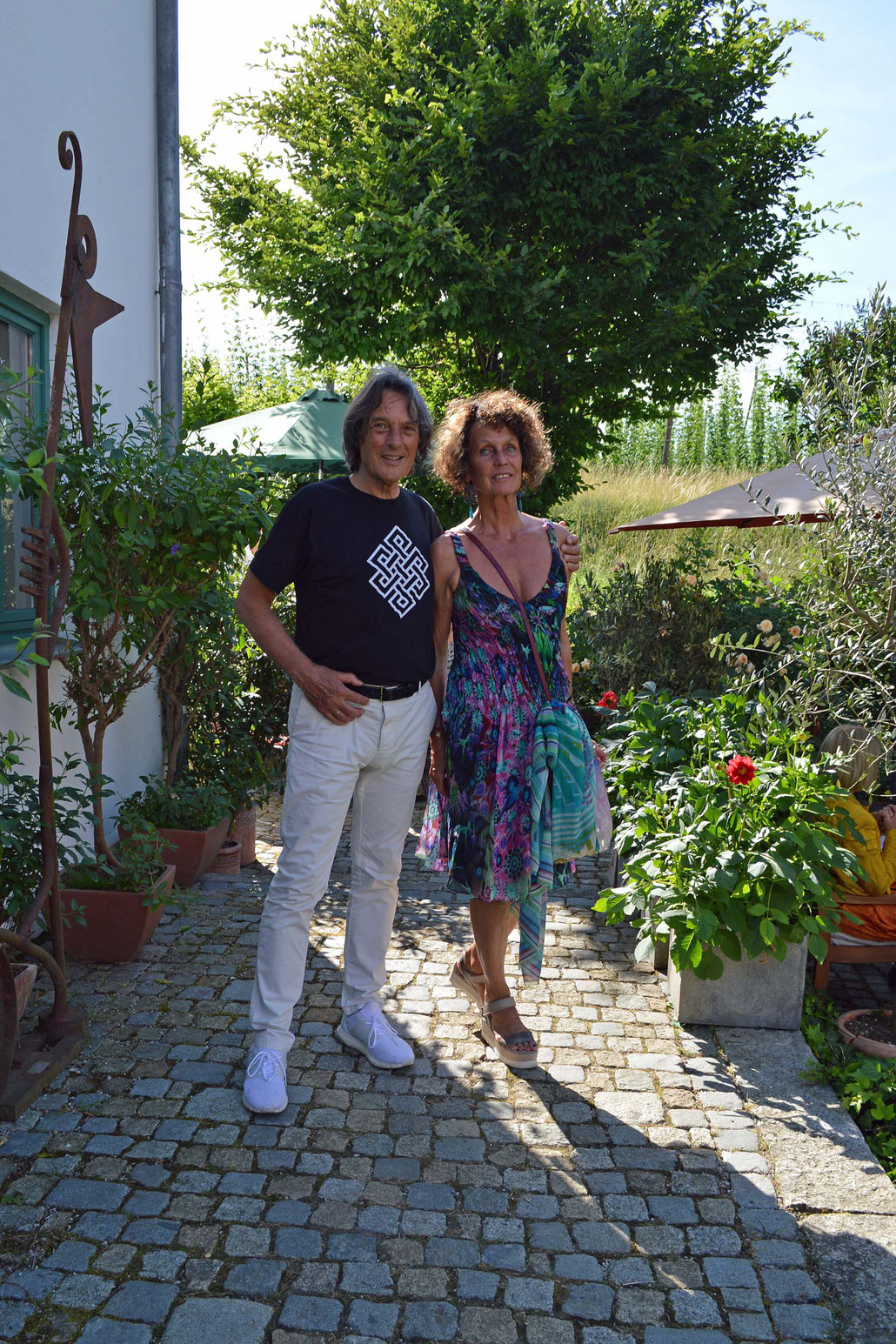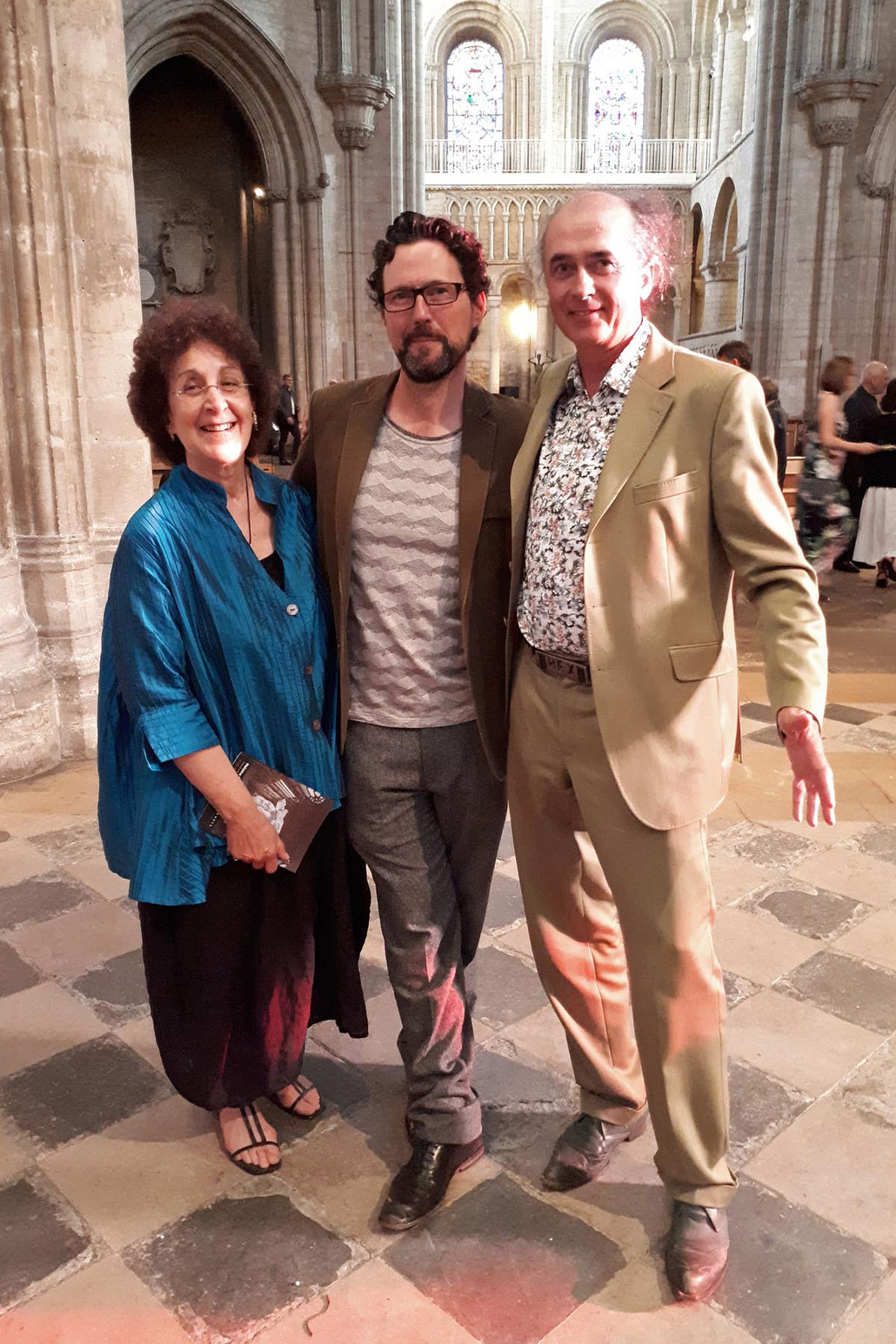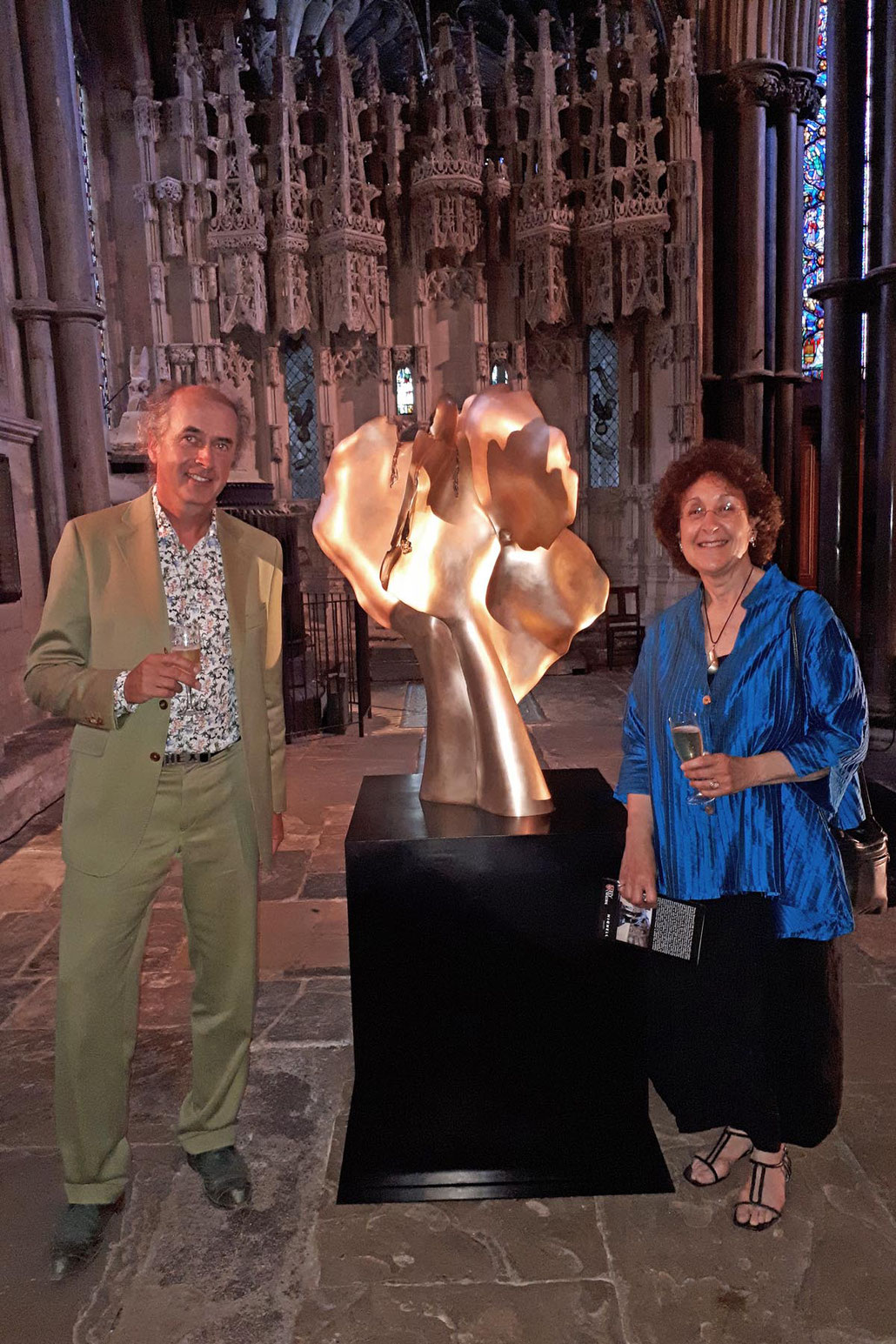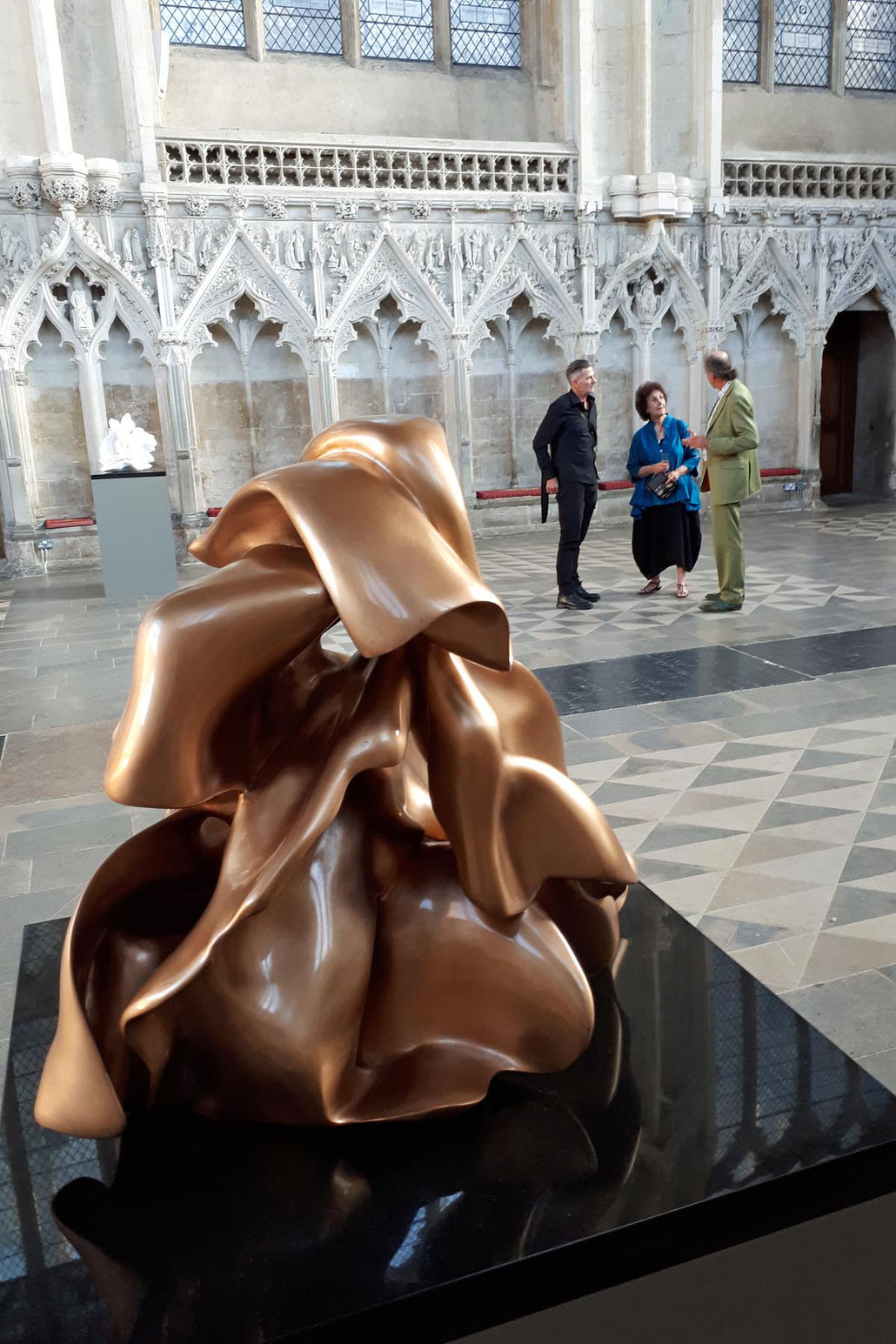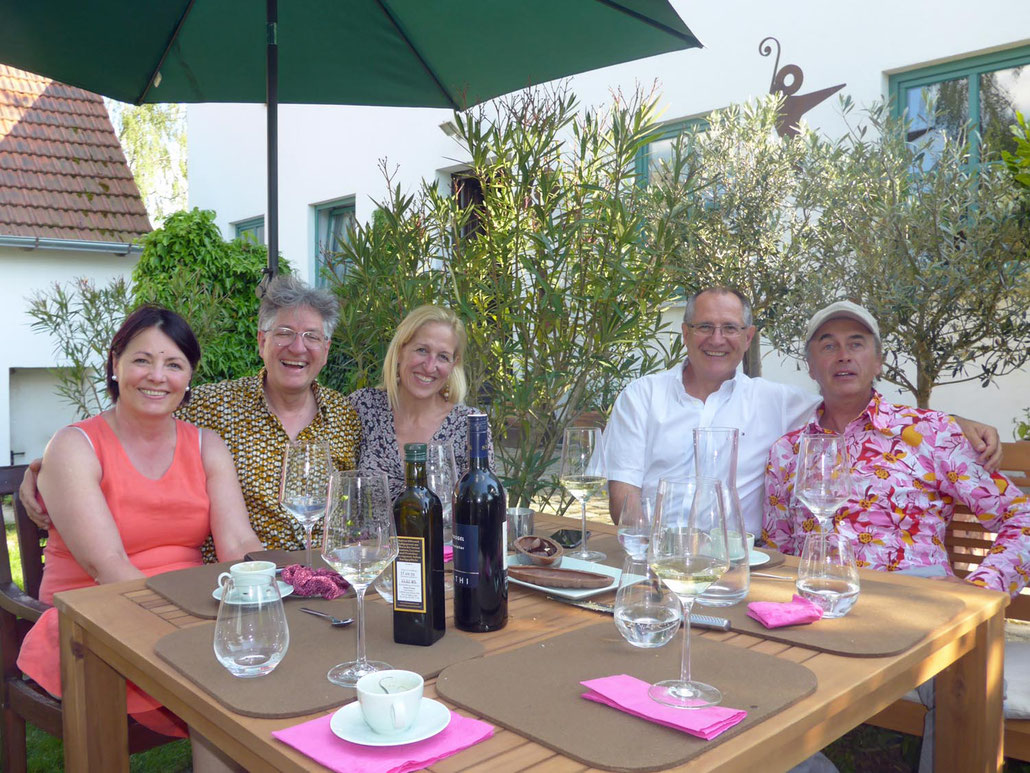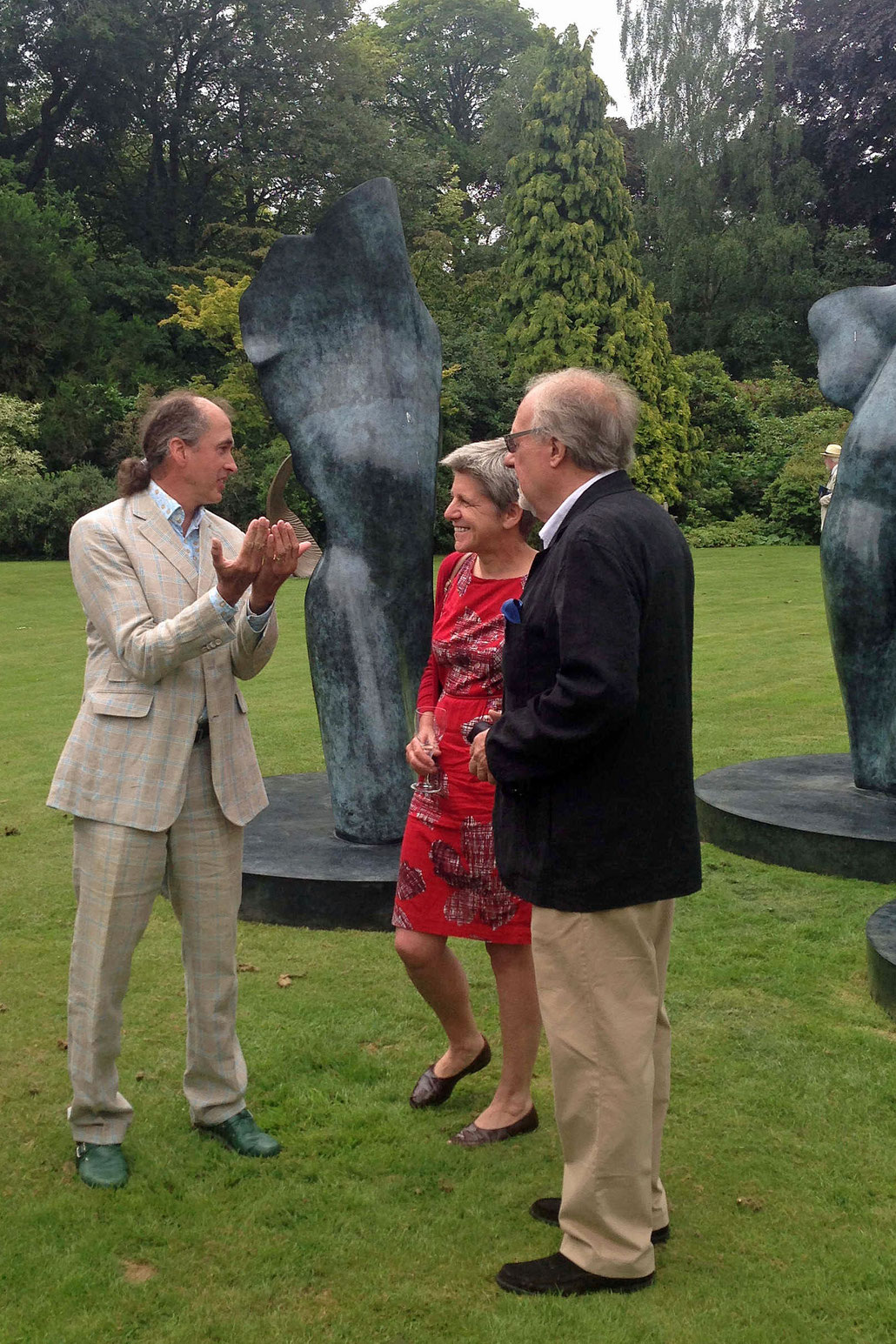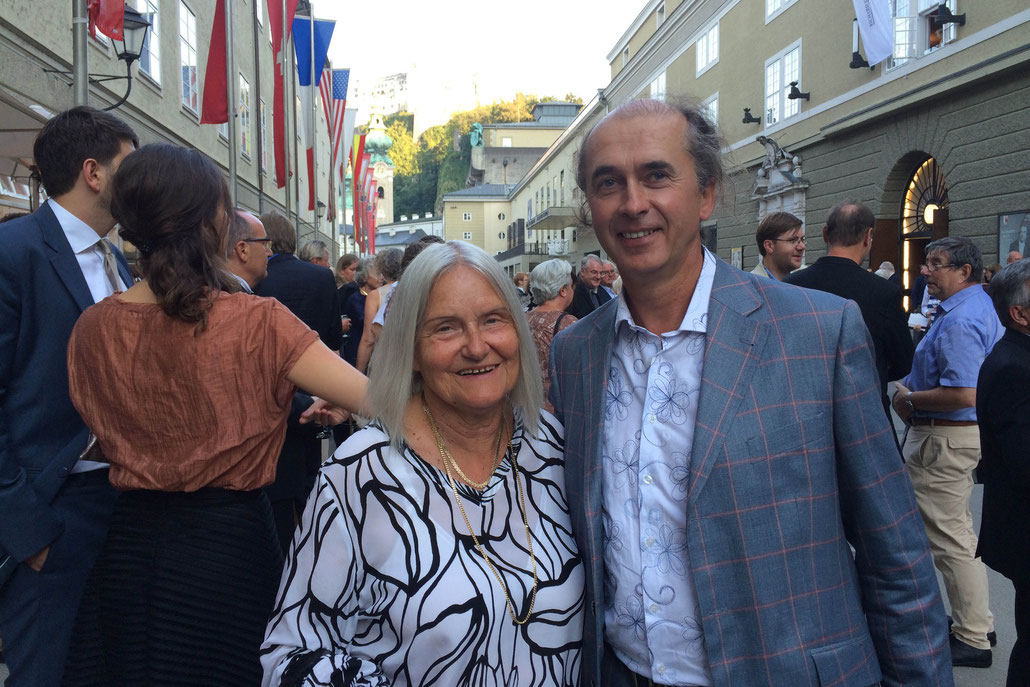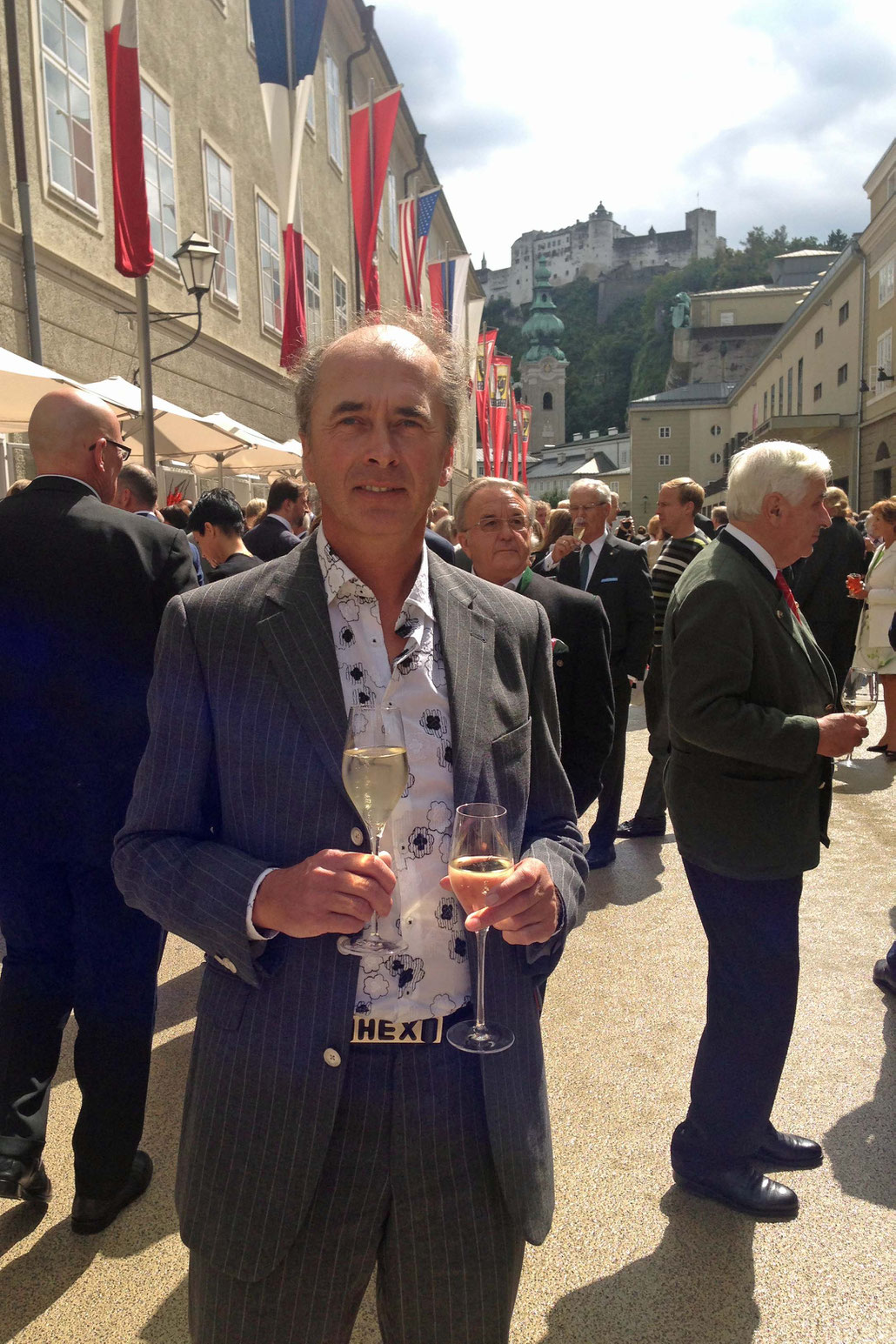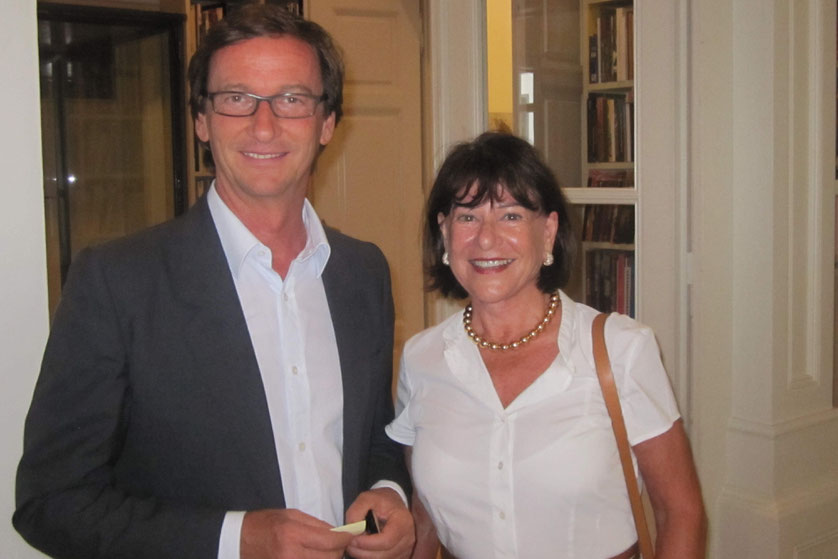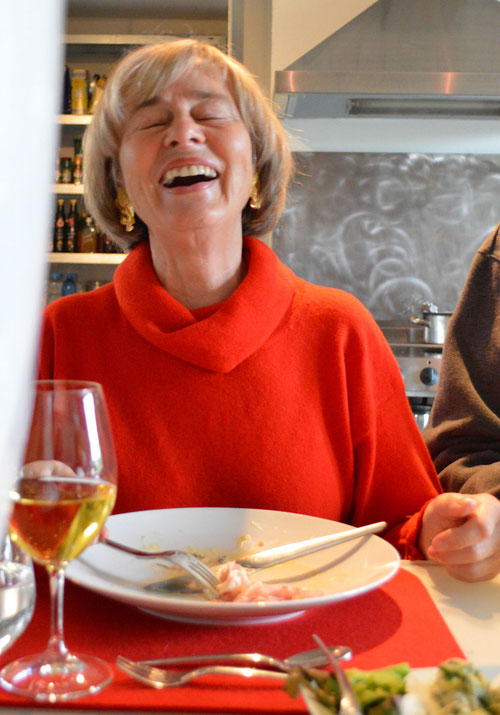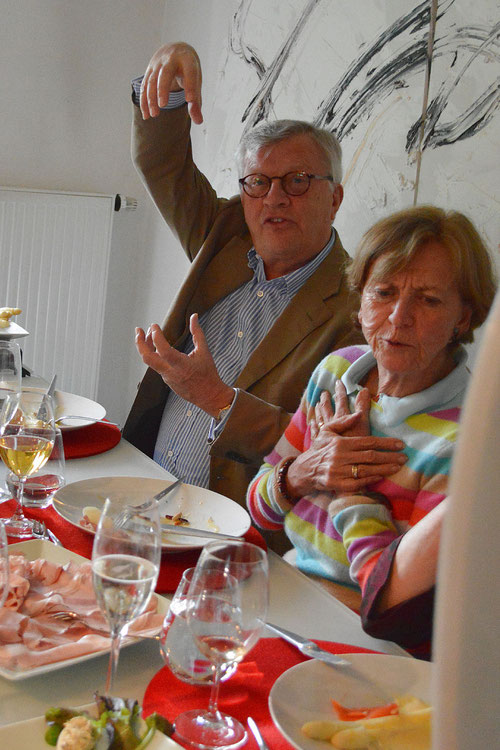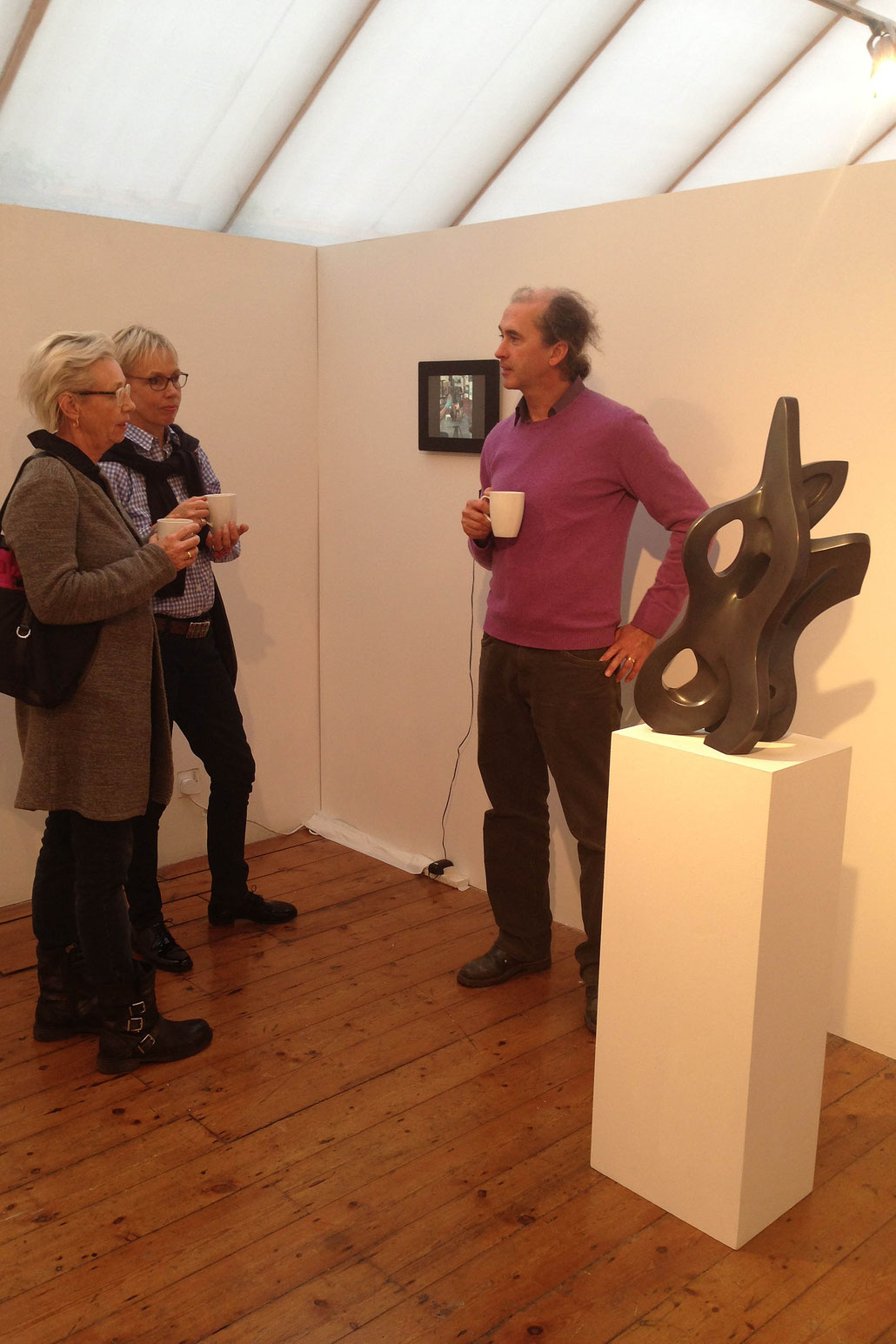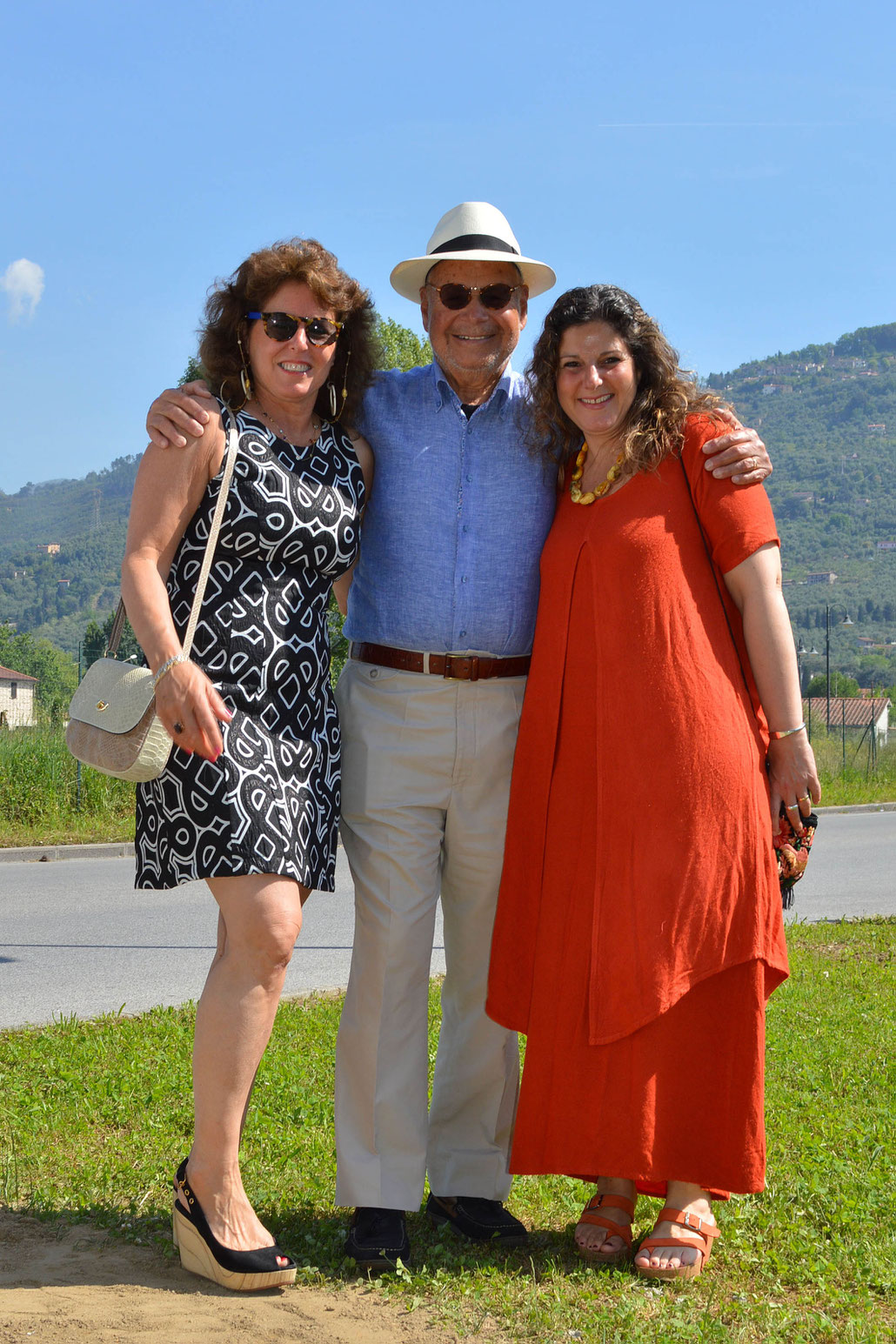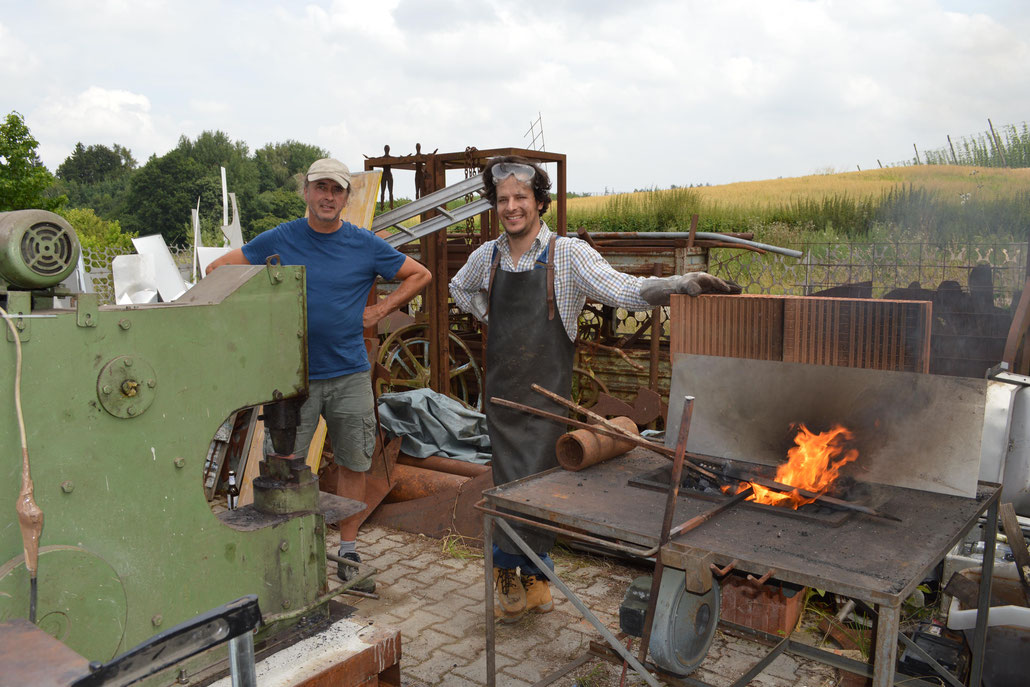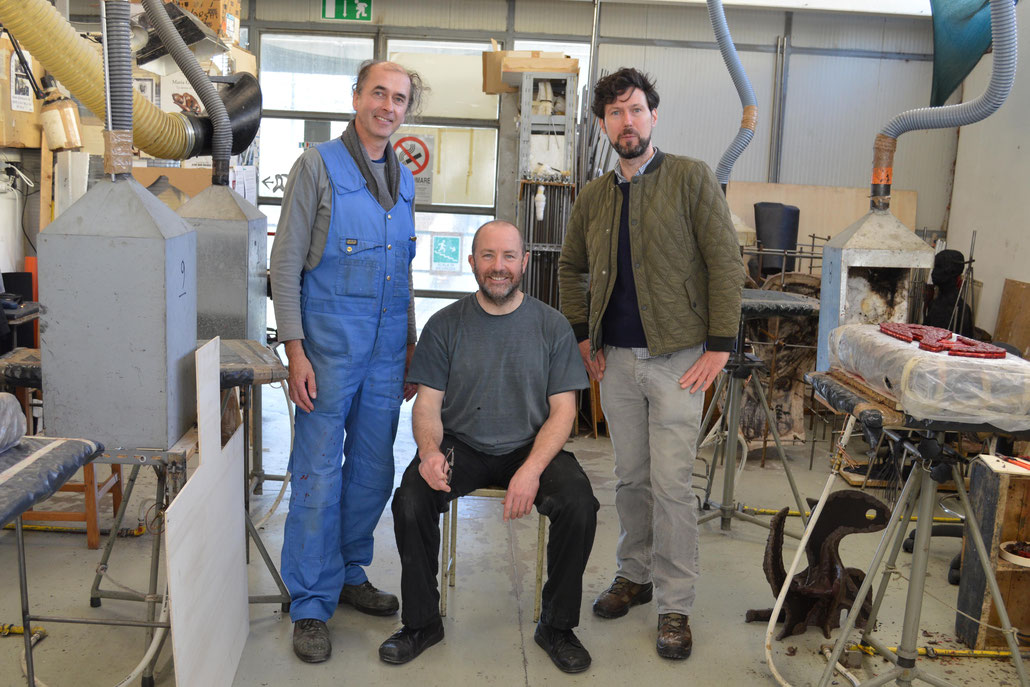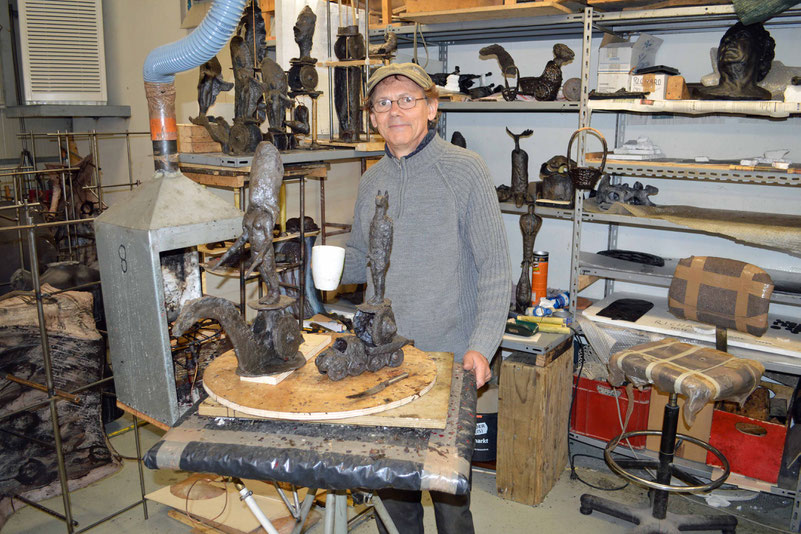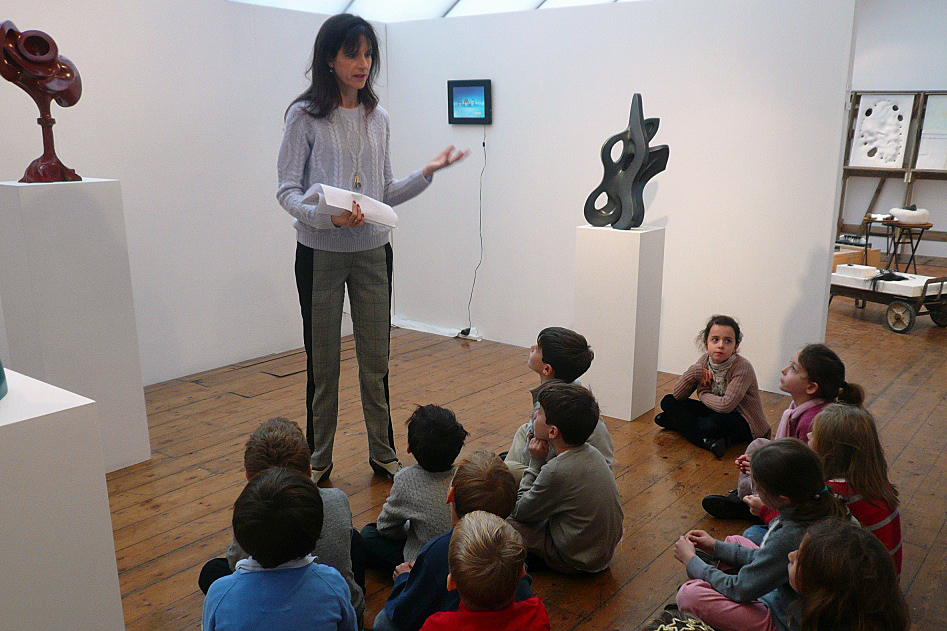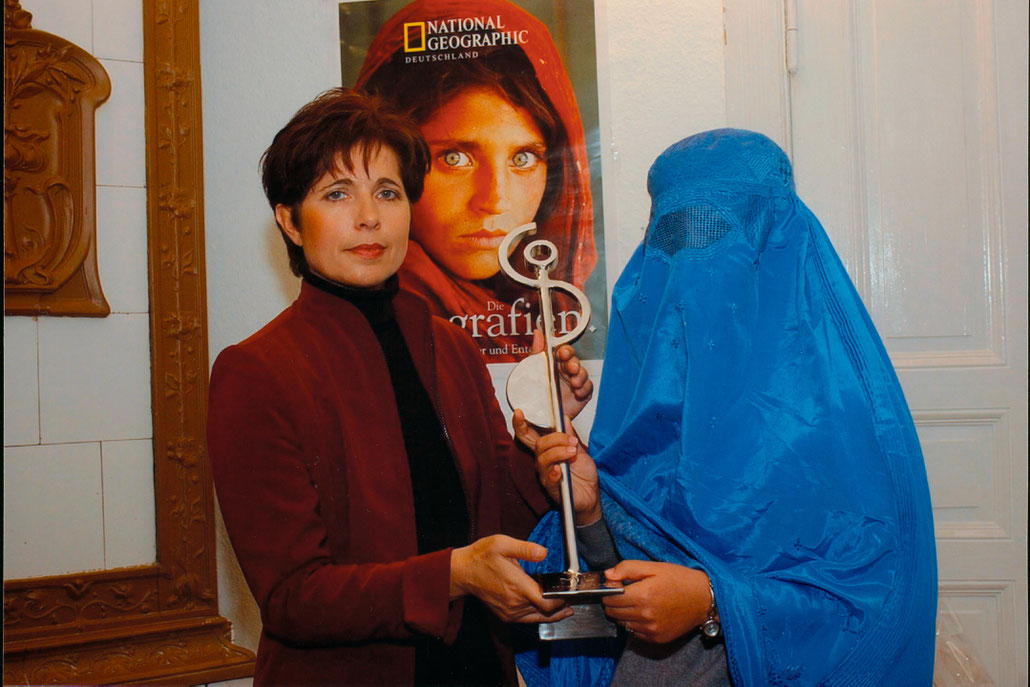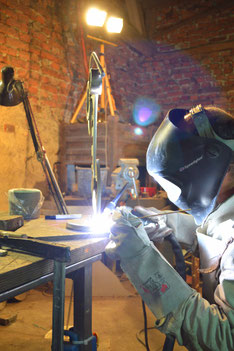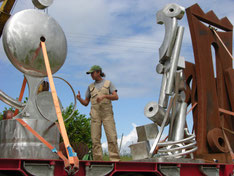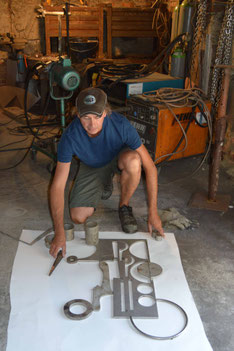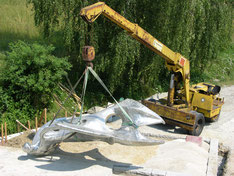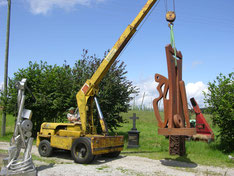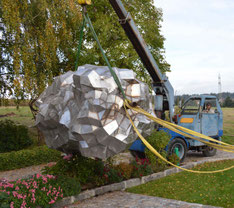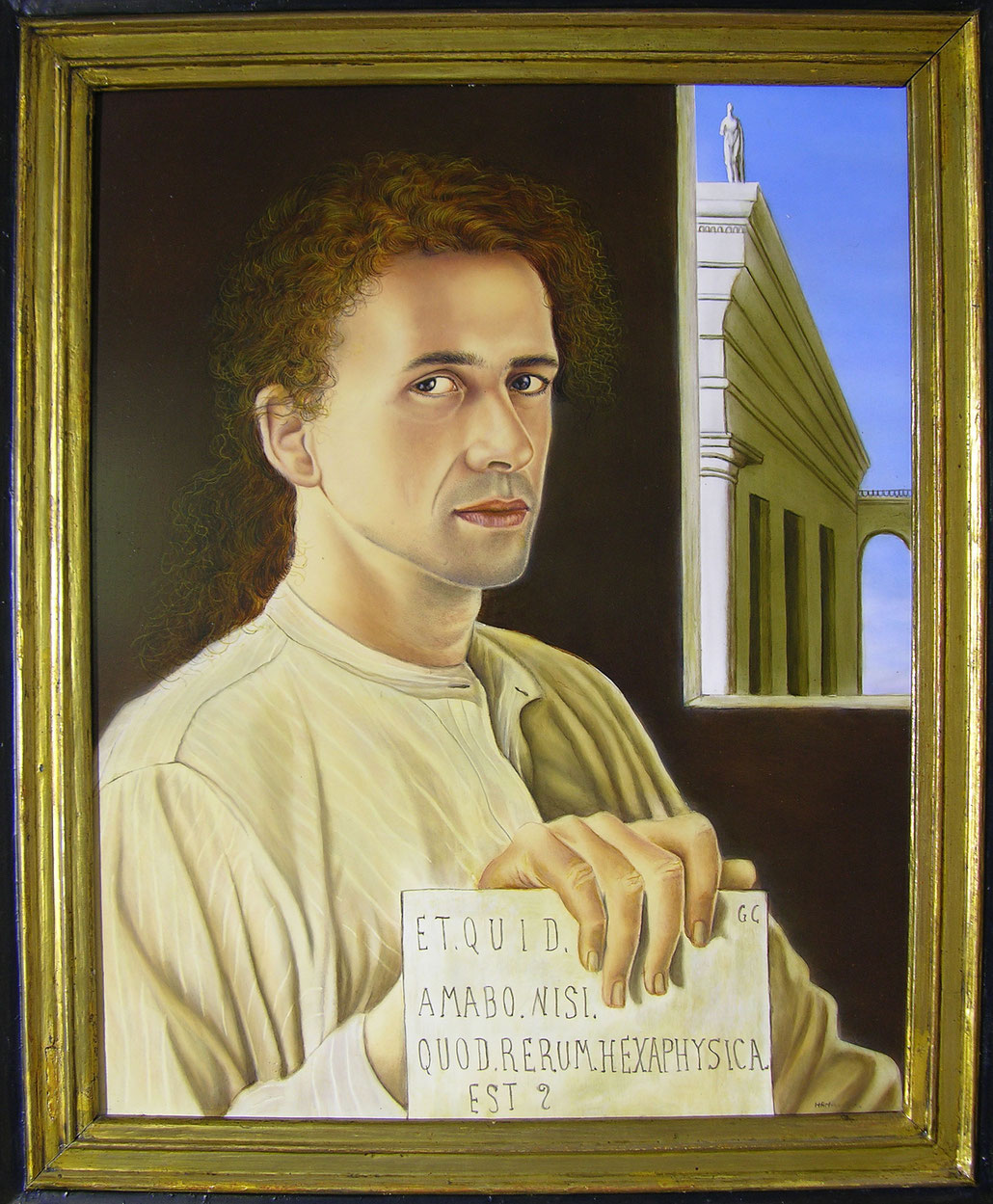PEOPLE

Helaine Blumenfeld and Hex March 2022

Helaine Blumenfeld OBE in her studio in Pietrasanta

Ron Mehlman and Hex in Ron´s studio in Pietrasanta June 2021

Hex and Tornado

Steve Duncan, Marilyn Duncan and Hex in front of Ely cathedral

Helaine and Hex at her private view in Ely cathedral July 13th 2018






Hex F.R.B.S. , Louise Plant F.R.B.S. and co-curator John Sidney Carter F.R.B.S. in front of Helaine Blumenfelds bronze group " The Space Within" at the University Of Leicester
Ingrid Lüft and Hex at the operafestival in Salzburg
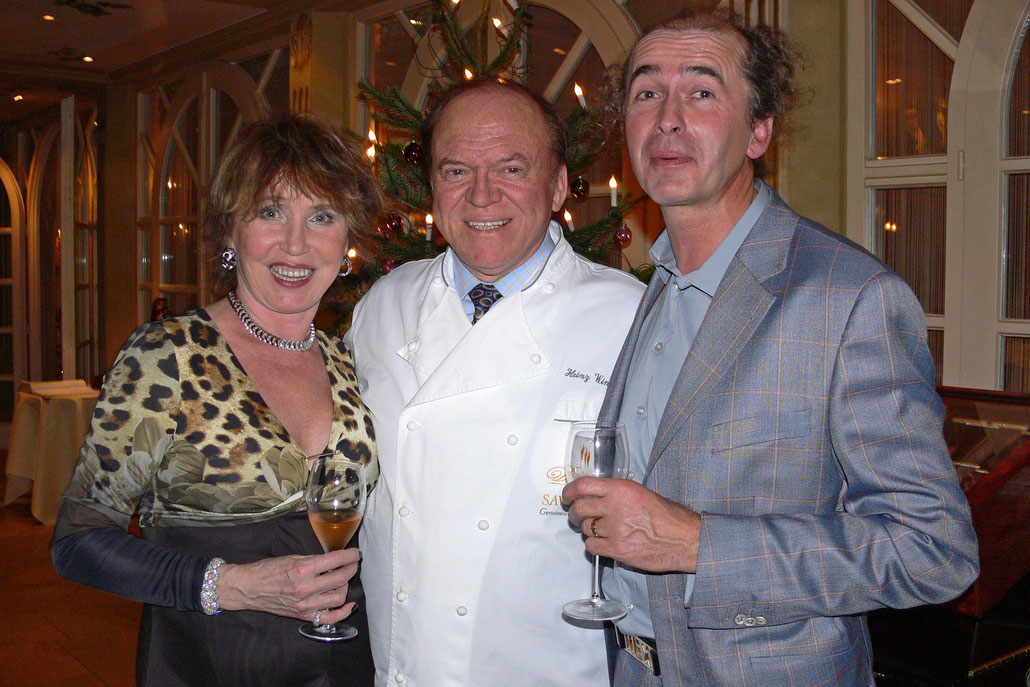
Art consultant and collector Dunja Siegel, star cook Heinz Winkler and Hex at Heinz´s Restaurant "Residenz Aschau"
Meike shovels together with HEX the deep foundation for HOMBRE DEL HIERRO. Meike and Eckart Brandhoff are HEX - collectors and friends since 1993 and own 32 outdoor sculptures of him.
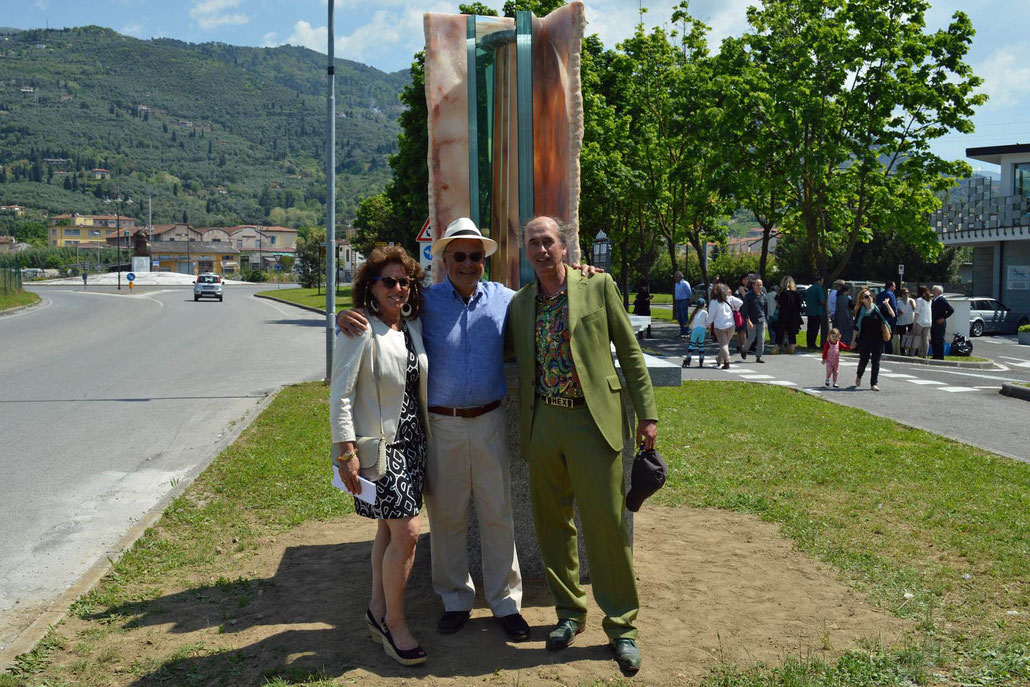
Professor Janice Mehlman, Professor Ron Mehlman and Hex at Ron´s inauguration of his sculpture " LEAVES OF GLASS" in Pietrasanta
Janice and Ron Mehlman with Valentina Fogher, who is the curator of the City of Pietrasanta and the director of the " Museo die Bozetti".

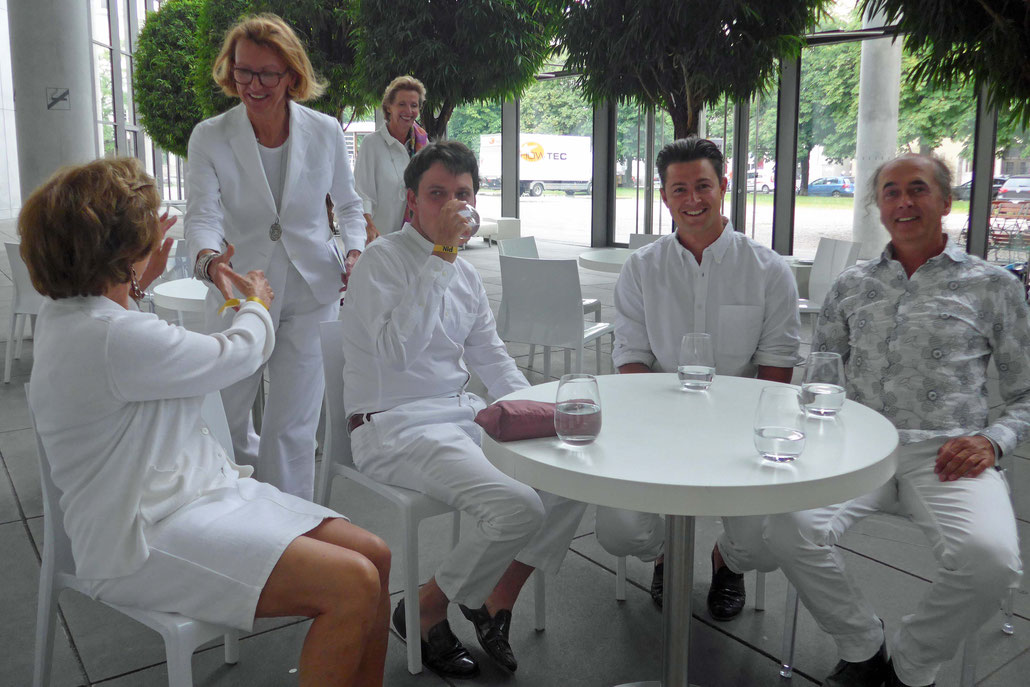
" Picnique en blanc " at the Pinakothek der Moderne Munich

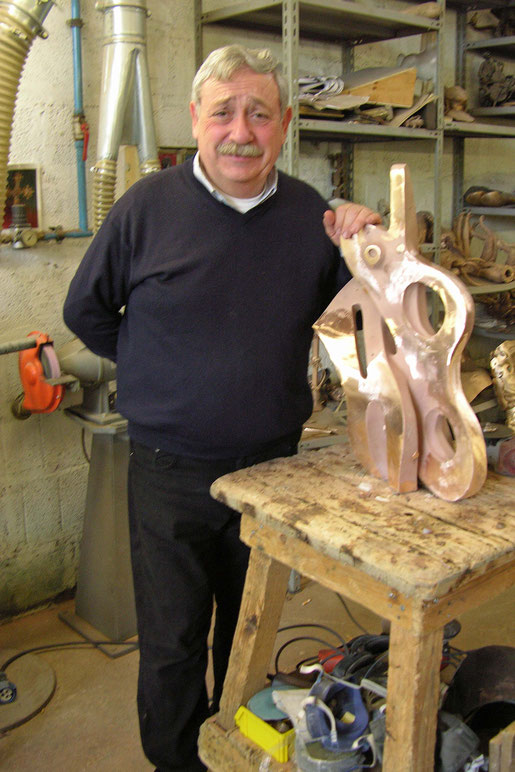
Adolfo Agolini the director of Fonderia Artistica Mariani in Pietrasanta / Italy.
The sculpture is a raw cast of THREE APUANIC FORMS by HEX.
Im Zuge der Zusammenarbeit mit der Royal British Society Of Sculptors in London hatten wir dieses Jahr das Vergnügen Mr. Hex in unserer Gießerei zu betreuen. Er ist ein junger, aber bereits erfolgreicher Künstler, der vor allem für seine Stahlskulpturen bekannt ist die er von eigener Hand anfertigt. Neben seinem persönlichen Stil zeugen diese auch von einem bemerkenswerten handwerklichen Können. Bei uns wollte Hex eine für ihn neue Methode der Bildhauerei, das Wachsausschmelzverfahren, erlernen. Für uns war es schon von Anfang an offensichtlich, dass wir einem außerordentlich gut vorbereiteten, professionellen Künstler gegenüberstanden. Es war ihm daher ein Leichtes sich die neuen Arbeitsweisen, die er unbedingt erlernen wollte, anzueignen. Sowohl im Entwurf in Wachs wie auch beim Gießen und der Nachbearbeitung der Bronzen tat er dies mit Meisterschaft. Hex war, durch sein Verständnis der expressiven Möglichkeiten die ihm geboten wurden, in der Lage seine Kreativität in die Welt des Bronzegießens einzubringen. Sein Verhältnis zu den Artigiani war unkompliziert und er integrierte sich, durch seine respektvolle Art im Umgang mit uns allen, perfekt in dieses Umfeld. Höchste technische Fähigkeiten und sein künstlerisches Können fanden bei allen Bewunderung. Wir waren wirklich glücklich ihn zu Gast gehabt zu haben und wir wünschen uns dass daraus zukünftig eine fruchtbare Zusammenarbeit entsteht. Dies auch da Hex mit Sicherheit ein Künstler ist der mit seinem Werk den Namen Pietrasantas in die Welt hinaus tragen wird.
Adolfo Agolini, Direktor, Fonderia Artistica Mariani www.fonderiamariani.com
Within the program of collaboration with the Royal British Society Of Sculptors in London, this year we had the pleasure to host in our foundry Mr. Hex, a young, but already successful artist, who is renown above all for his steel sculptures, which he makes personally and that, besides a whole personal style, they reveal also a remarkable artisan skill. Through us Hex wanted to learn another way of making sculpture, which is the lost wax technique. It was easy to understand since the beginning that we were in front of an extremely well prepared professional artist, who therefore was able to capture with ease the new techniques, which he imposed on himself to be acquainted with, both in the wax making and in the casting process as well as in finishing his bronzes, that he was able to make with expertise. Hex was able to adapt his creativity to the world of casting by understanding easily the expressive possibility that this was proposing to him. The relationship with the artisans has been simple and he integrated himself perfectly in this environment by being accepted for his respectful way of approaching all of us, but at the same time for highlighting his technical and artistic capacities, for which he has been appreciated by everybody. We have been really happy to have hosted him and we wish to establish fertile relationships with him in the future, also because Hex is indeed an artist who will contribute with his work to bring the name of Pietrasanta in the world.
Adolfo Agolini, Director, Fonderia Artistica Mariani
HEX and the Mexican sculptor Pablo de Laborde Lascaris M.R.B.S. during the " Home Of The Welder - Residency " 2016 in Osseltshausen / Germany. Starting in 2016, every summer HEX will invite a young member of the RBS to learn welding and forging at his studio.
In July 2017 Sol Bailey Barker M.R.B.S. will be the next to work and work out here.
Hex,
This is for having the courage
To own your history,
Having the strenght to step beyond it,
The wisdom to reach out to others,
Making the world and the future
A better place for generations to come.
Sol Bailey Barker, July 2017
HEX together with Richard Jackson M.R.B.S. and Richard Stone F.R.B.S. at the famous wax room of the Fonderia Artistica Mariani in Pietrasanta. Both were winners of the Brian Mercer Residency for bronze casting. Stone in 2014 and Jackson in 2015. On the floor right under the table there is the brown wax for "El Sourdog" made by HEX.

Dr. Helaine Blumenfeld OBE P.V.P.R.B.S. and Alexandra Harley F.R.B.S. resident in 2016 discuss a form made out of paper and wax
Stephen Duncan F.R.B.S. is the 2017 resident who exploded with creativity and made over 35 drafts. 6 of those will be casted for his show at the RBS Gallery in London.
Christie`s curator Cynthia Scoville teaching school children at the exhibtion of HEX in London.
The Brian Mercer Bronze Casting Residency included an exhibition of 5 of my newest sculptures from October 31st to December 13th 2013 in London. In the same exhibition, Mark Richards FRBS, showed his works from the marble residency. The opening of the exhibition in those wonderful rooms of the RBS in South Kensington was very well attended. When we held the “artists talk “ 5 weeks later the gallery was crowded. Thanks to the perfect organization by the RBS team, Mark and I could be easily heard all over by using a microphone. My speech lasted 30 Minutes. To talk to fellow sculptors, some of them very famous, to collectors, curators and donators and to exhibit in that honorable RBS gallery is surely a highlight in my artistic career.
ZDF TV editor Conny Hermann hands over the "ML-Mona Lisa" TV-Price to a representative of RAWA. The price is a unique by HEX
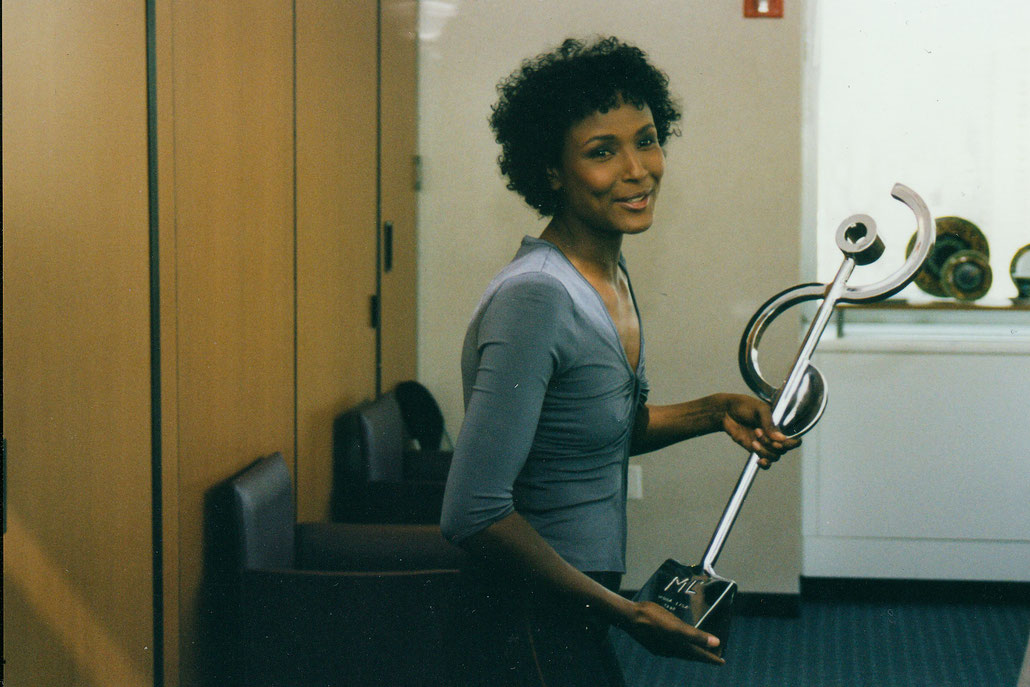
Waris Dirie super model, author and UN Special Ambassador in New York loves her "ML-Mona Lisa" TV price made by HEX
Foreword for the Residency Catalog 2013 by Dr.Helaine Blumenfeld FRBS PVPRBS OBE Royal British Society of Sculptors
The original concept underlying the residencies was to provide an opportunity for a talented sculptor, who was accomplished in a particular medium to come to Pietrasanta and have the opportunity of learning to work in a totally different medium. This idea has continued to dominate the decisions when we come to judging the final short-listed candidates.This is the 5th residency at Fonderia Mariani that has been awarded. The first four were all awarded to women at early stages in their careers. Deciding to give the residency to Hex was a departure. He was already an extremely prolific and accomplished sculptor having worked almost entirely in constructed pieces in steel. During the interview he told us that he had never received instruction or mentoring. He had never worked with a malleable material. He had worked with steel from the outside in -- cerebrally rather than emotionally. Imposing a form onto a hard material. He arrived in Pietrasanta with a model he had done in steel and hoped to recreate in bronze. I urged him to start without any preconceived ideas. Wax required an entirely different approach. He took to it immediately. He was able to transfer his own thoughts and feelings directly into the forms he was creating. He was able during the time he was there to feel comfortable using the wax. The result has been exciting. The work is very original revealing his imagination and psyche. Instead of imposing a form on the material, he created it out of the material. He learned to develop his critical eye and welcomed criticism . Once a piece was cast, the skills he had developed as a sculptor working in steel were invaluable. He was able to work on the finishing – welding, chasing and polishing of his forms. He was eager to learn about the mysteries of patination and experimented widely with the effects the patina had on the finished form. Hex has been a phenomenon. He believes that working in the Mariani foundry has not only changed his sculptural practice but has changed his life. Everyone he has interacted with feels that he has affected theirs -- from the artisans in the foundry to other sculptors with whom he generously shared his knowledge, energy, focus, ideas and enthusiasm. It was a great pleasure for me to mentor him and I felt that his residency was a great success.
Helaine Blumenfeld
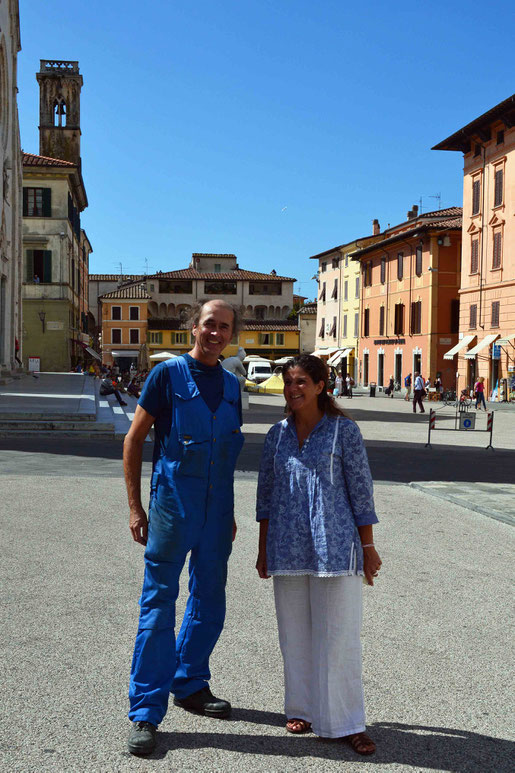
HEX and Valentina Fogher standing at the Piazza Duomo in Pietrasanta. Valentina is the director of the Museum and the General curator of the City. She was organizing everything and solving every problem during the residency of HEX in 2013.
Thank you Valentina !
Excerpt from the RBScatalogue “The Brian Mercer Bronze Casting Residency 2012”
Valentina Fogher is curator of the Museo Dei Bozzetti in Pietrasanta and she organizes the Residencies for the RBS
If you have never been to a foundry before, you can not imagine how complicated could be the making of one piece of sculpture in bronze. The whole process could be very long, especially when not everything depends on the artist, whose contribution most of the times is really fundamental at the beginning, at the wax stage, when he/she is really creating his/her own sculpture; afterwards, on the other hand, the piece is entrusted with confidence to a skilled team of people, who translate it into bronze. When Hex arrived at the Fonderia Artistica Mariani, he was not acquainted to work with wax. That meant mostly that usually, working with steel, he was used to look at already existing materials, such as scraps and found objects, that he collected around and then put them together, mostly by bending, welding, and polishing all the elements. He never before created something out of wax, modelling with his own hands. It took him only one day to understand its process and to start this approach, newfor him. After that, he never stopped. I actually lost the count of all the pieces he has made since. This was very exciting for him, especially because he had infinite possibilities in front of him and was able to experiment with a malleable material new forms, that he would not have even considered before. On the other hand, the ‘solid’ structure of his experience and knowledge of different materials, allowed him to create innovative solutions, thanks to the ‘inner soul’ that he was building inside his sculptures, that is the required skeleton that allows the piece to stand up by itself without collapsing. From that stage on, Hex decided to be present in all the passages of the making of a bronze sculpture, with great surprise– and anxiety, at the beginning – of the artisans of the foundry. But Hex succeeded very well, gaining high respect both as an artist and as a craftsman. In fact, on the very first day, when Hex arrived at the foundry, he unloaded two large and heavy, metal suitcases from his car, and everybody was wondering what he was carrying with him. I guess that then, in a little more than three months, he used most of the tools that were contained in them. For what I was able to know about him in such a little time, I sense that by nature Hex is very curious and independent, and he was eager of trying as many techniques as he could at the foundry: at the end, it is always a learning process. When his residency was over, he continued to come to the foundry in order to complete some of the pieces he had already made and to start new ones, that he had in his mind. He got addicted to the foundry, and to the Pietrasanta environment as well. He is very friendly with everybody, both artists and artisans, and everything could be a new interesting discovery for him, even carving marble, that he did in his spare times – evenings and weekends. Hex is a heavy worker, and with this I mean that he is not afraid of working in any material, for long hours. And he is very fast. So fast, that the artisans were not able to keep up with him: he was producing more than what they were able to carry on in the process. I think that he is a unique person, who appreciates and respects what other people do. On the other hand, he is not completely immersed only in what he is making, but he is also able to explore and understand the environment around him, both physically and psychologically, which helps in taking the most out of any situation. Throughout all these years of The Brian Mercer Bronze Casting Residency in Pietrasanta, this is indeed the first time in which a professional artist is almost ‘challenging’ the artisans, not only for his speed, but especially for his intellectual and practical skills. He is a great addition to the Pietrasanta ‘family of artists’.
Valentina Fogher
Interview with HEX by Valentina Fogher, Casa delle Camelie, Seravezza, April 28th 2013
Hello Hex!
Hello Valentina
We are here for your interview and obviously the first question is: How did you think to apply for this RBS Residency in Pietrasanta?
Johannes von Stumm asked me if I was thinking about applying. I read about it on the e-mail bulletin they send out every Friday, but I wouldn’t have come to the idea of applying for that Residency. But he said: “Why don’t you do it?” And so I did it.
And so, while you were applying, you thought: “Well, I could translate maybe my work in bronze”…
I wasn’t thinking so far, because I’ve never applied for anything. I didn’t really think about it, I’ve just applied because Johannes encouraged me. And then it happened… And then it happened…
And then you arrived in Pietrasanta…
Yes
How was your first impact with the city?
It was raining. The first impact was that I’ve never been at a place where so many sculptors are. In Germany you hardly meet them and if you meet them, then they are mostly very competitive and unfriendly. They don’t treat each other very friendly in general: so friendlyness is what I’ve learned about from Johannes von Stumm. We were travelling to Leeds with Sculpture Network to a symposium and then he asked me why I don’t apply to the RBS. So first I became a member of the RBS by Johannes and then I got the residency here, chosen by Helaine Blumenfeld, William Fawke, and Anne Mercedes …….. from the BMCT and the President of the RBS, Terry New.
So you arrived, you had your own space, and you started to work right away at the foundry…
I arrived on Friday, so I had normally to wait until Monday, but I started to work at Fonderia Mariani on Saturday morning.
Were you surprised to see such premises, a foundry you did… Have you been to a foundry before?
Yes, I’ve been several times visiting foundries with Sculpture Network and I have already worked twenty years ago in a sand casting foundry for some weeks. But I was astonished about seeing so much figurative art, because in Germany it’s mostly abstract. After the War, out of the German reasons, because the Nazis misused figurative art everybody skipped figurative and changed to abstract. It was for me very astonishing to see such a big amount of figurative art in Pietrasanta. Abstracts are the minority here. But actually there are a lot of artists from all over the world, very few Italians… Many Norwegians; there are a lot of British, there are Americans, Australians, … So it is a big artists’ community…
Yes Did you find yourself well in this kind of context?
Yes, everybody was very friendly; especially at the time when I arrived here in February, it was the bad weather season, so all the ‘sculptourists’ haven’t been here yet. Only the real sculptors were there, so it’s very nice, very friendly, very warm, and very female dominated: most of the big sculptors I met were women. That’s astonishing, too. What a surprise in Italy… Not just in Italy. In general, even in Germany they say that the art market is dominated by males, but here, at least at the Fonderia Mariani, males are the minority, not just in quantity, but in quality too: it’s the female ‘arte’ what I saw there. Hanneke Beaumont, for example, Helaine Blumenfeld, my mentor here, Margot Homan, …….. Daphne DuBarry, Anna Cromy, Shelly Robzen and ……… Anne-Claire van den Elshout. Just to mention some. At Studio SEM, the marble studio, I met Inger Sannes and Almuth Tebbenhoff….
Did you have an idea on what you were about…
No, I hardly start with ideas. I just started working. But I was astonished that it was running very well from the very first second. And just to do the opposite I have always done. I come from scrap-welding, so the first step in welding with scrap is in having … in seeing something: you collect a piece of scrap at the scrap-yard, you choose it because you like the form. So it is the first step to get into something, it leads one step after the other. And to work in wax is completely neutral. The funny thing is, in opposition to work in stone, where you have an existing volume and you have to substract, and in opposition to a scrap-welder, who adds, but he already adds existing forms to… he adds them into another bigger form, to work in wax is something completely neutral. I thought it would be difficult, but I have just started and it worked out, and until now I made seven different drafts in wax and I am working on number eight. Because you have to create them from nothing, from the wax, and then … Not from an exsisting form that gives you an idea or leads you to something. So you just have the wax in your hands, like mashed potatoes…
Did you feel freer to work in this way? Your hands were going by themselves, so…
Yes and no: it is freer, because you don’t have to think about limitations of the material, you don’t have the fear, like in stone, that everything you knock away is gone forever. So with wax you can add it. It’s a little… It has much to do with welding. In the end I’ve learned it’s about having the change between liquid and solid, and it is the same like welding, except that a welding spot is more reliable than a piece in wax, but it is about the shifting between soft and solid. And that is the thing I like about wax. And it’s fast to start, it’s not very exact, that’s what I don’t like. So to work on a straight line in steel is very easy: if you finish it after ten minutes, it’s finished forever. In wax you have to do it, and to do it again and to re-do it… … to touch it, and re-touch it … Yes, re-touch it… But it is very free for my way of working. But you have to build a structure underneath… I didn’t really build … no and yes, the first one I didn’t, so the next morning I came back and it was collapsed, because it was too warm in the room and the sculpture was too heavy, but you just need a little structure, just a base – you weld a stick on it and then you use that. On the other hand, I learned how to construct with the hard wax, to have an inner construction, and then to use the soft wax outside, and you can mix your wax. In the room where you get the hot liquid wax: you have the hard one in the big 1000 liter bowl, and you have the morbid one in the other one, so you can mix it in the way you like it, you make your own wax sheets and use them for construction.
And were you helped by the artisans there or did you understand by yourself?
Not really, whenever… The funny thing is that they don’t speak to you, so if you have a question, they happily answer, but I didn’t ever question something in the beginning, because of my poor italian. I have just looked how they do it and then… Therefore, the first time Angelo, the master of the wax studio, made me a sheet of wax, like he does for every artist who needs one. The next morning – he starts at 8:00 a.m., so I was always before him there – I did it on my own. He was pretty astonished, because he didn’t teach me. I just followed him when he made it, but I counted how many spoons of this wax and how many spoons of that wax and how he prepared the granit table with oil and how he defines the thickness, how long he waits …because if you wait too long, the sheet does not go off the granit any more …
Like a recipe …
Yes, and I just had it on my mind.
Did you enjoy this first phase of waxing?
Yes, I enjoyed everything and I pretty much know I will miss it. All the people told me that it is easier to do it in clay first. Even Helaine said that normally I should have started in clay first, but she saw that I was getting along with wax, so she let me do the wax. Now I love wax very much. And then from the wax, you had the … you decided to do some pieces that you made with the mould and other singular ones with the lost wax …. The only thing that you have to decide first is if you want to do a single cast or if you want to have a mould. That defines the maximum thickness of the wax . And it is easier to have a mould, because then you don’t have to think about anything, because then the mould-maker has the problem to come around the curves.
Before Fonderia Mariani didn’t have a mould-maker; now they have it, and I think things are much easier, because…
Marco is a very good mould-maker , he is a genius ! I really felt ashamed when I saw that his first mould for me was much better quality than my first sculpture lying in it. When I told him, he just laughed … he knows that he is outstanding. The artigiani are proud people.
So, you then can make… How many pieces do you think you are going to make out of one mould?
In the end, I want to make 8 + 1, like everybody does, but that depends on how much I am selling. Now I have five pieces ready for a mould, one mould already made, two casts out of it, and then I have two single casts that I have already casted, so I have just knocked them out of the shell before the holiday and tomorrow I will work on them.
Excellent. And do you think you are going to make all of the bronzes with the same patina, or are you going to play with them?
I will work all of them differently. And the first one, that is now completely finished, and that is standing at the patina-maker, I wanted to do it in pure bronze, and just have it dull. But I have a little difficulty with the color of bronze, because I’ve been working in stainless steel for 25 years and I am really addicted to its colour. I don’t really like the color of bronze and I shouldn’t tell the artigiani, so I put it to Loris to make a patina, but a brownish patina, ocra, a brownish-yellow patina…
Warm…
Yes, so pretty close to the bronze color, but with more… in the pure material nothing happens, and if you have the patina on it, you can put some… a little black on the edges, and you have more … you can add more structure in the surface.
Do you like this about the bronze, that you can play with it?
That is the thing what it is really about … the really big difference it is not just about that you can cast several pieces, but that you can change the original with colors, and with different patinas… And not only that, but the surface can be different from one to the other… Yes, and what I definitely want to do is white bronze, because I like it from the colour, but I forbidded it to myself for the first cast, because I said: “I am here to see something different,” so I will definitely do some white bronze, natural, without patina, sometimes.
Do you think that you are going to work again in bronze?
I think I am addicted to it. It’s a totally new way of expression for me. Pretty much all the people who see my bronzes, all my wax pieces now, they say it’s typical for my style, but I can’t believe it. Even my wife Ina says it, but I can’t believe it, because it’s completely made differently than the works before. As a steel-welder, you have always to think about how to get it around the curve, how can I bend it, it’s very resistant, steel, and wax isn’t, so you can just do what you want.
Don’t you think it is easier to work in this way, in bronze instead of steel?
What I’ve figured out, in the beginning it’s easier for the form, but the final work, that is adding up the working hours are much more than in steel. For the wax model, I need the double time as I would do it in stainless steel, but then, so I’ve always thought, then you can cast it eight times. But for each cast you have the wax model, you have to re-touch it, you have to work on that again; on the cast, afterwards, someone has to work on it, either the artigiani or the artist himself. So it’s adding a lot of working hours to the piece. It’s not really like many people imagine that you make one draft and then you have many out of it easily; it’s work on each of them. But I think it’s also that on a steel piece you can work by yourself, especially after all these years of experience, but for the bronze you really need a team of people and it’s always depending on somebody else… Yes, you never get finished, but that’s the funny thing that I learned here, too. Normally I start a work and I finish it. Here you never get finished, because in the time you have to wait for someone to make a mould, you start the next wax. It’s endless! ………………………………………………………………………………….………………… But this is because of you, obviously. Other people would just relax and do something else, or go and visit, but I understood that you are a workaholic, and in fact, after the foundry, you are going to work with marble…
Yes, I am addicted to work, to sculpture. For me this residency is a big chance. I am 48 now and I did about 1100 sculptures in steel, yet. A big chance to get more into production and I always say quality has something to do with quantity, because you learn from each piece. And as an artist you are curious about everything and you want to go, to keep the machine running faster and faster and to go bigger. And this you can do, if you have enough experience with the artigiani. So in the end effect, if you sell enough, you can outsource work-labour and make more sculptures. And that’s what I want to do: I want to do sculptures, I want to create, I want to have the vision about the patina, and then just let them make……
I was thinking on the other hand you can use a stainless steel piece and then make a mould out of it…
That’s the next step I will do. I will… I am working on my Asteroid series in Germany, I have been doing it for some years, in two ways: I have a very soft form of rocks with soft curves, and I have the crystalline form with very sharp edges, and next time I want to bring some smaller pieces, maybe with 40/45 cm to Mariani to make a mould of it, to test it in bronze, and to test it with different patinas. This is another development of your art production …
Yes, and it makes more sense than making a wax draft and loosing the wax, in the end, because the first thing I made in wax, after we have made the mould, it’s useless. But I have seen some other artists, they re-use their waxes, they cut them and re-combine them. Actually, the traditional way is: you make a mould and out of the mould you make a plaster, so then the plaster would remain as a memory of the piece, and then you use the mould. Also because the moulds now are a bit different than in the past, now they are much more flexible and re-usable than before. So it is again a matter of being smart about an art object. And what I have seen for example with Shelly Robzen, she works in marble and she makes her original, so the thing she makes it is a real thing, then she makes a mould of it, and casts it in bronze. So she doesn’t loose the original draft, because it is a unique piece of art in its own right. …exactly…
That is what I want to do with stainless steel, but on the other hand, if I do my stainless steel maquettes, I am stuck in the ability of steel. So maybe I combine it: I’ve always thought about making maquettes out of … how do you say if you have drilled holes in a sheet of steel? In Germany we call it “Lochblech” you can buy steel sheets with holes in it, so I could make some forms out of it and use them for wax, because you can press the wax through the holes, so you can cover it with wax. It wouldn’t stick on a pure piece of steel, it would fall off, but if you have the holes in it, you just press it through and the wax sticks on the wax, so I could do some first work in steel, and then work over it with wax. And what I want to do, next time I am here, I want to collect drift wood at the sea, I am surely not the first one, but … there is a lot of plastic scrap, and it’s very clean, cleaned by the sand and by the sea. I’ve seen a lot of things of Sir Eduardo Paolozzi, he used machine parts, and I have the idea, since I’ve been several times at the sea, to combine the organic forms of some drift wood with some plastic machine parts, and then cover them with wax, and have the ground structure for a sculpture.
Some artists also use wood, and instead of translating it into wax, they let it burn, and then the shape would remain, so you don’t have to put wax around it, but just let it stay, as an organic form…
I would like to use the organic form and make something own with it and over it. I would combine it with wax, not just taking a found object and cast it. For me it’s always about transformation.
Yes. You also started to work with marble and that was completely different than everything else…
Yes, but it was off the residency. I was introduced to Nicola Stagetti, at the opening of the Donna Scultura exhibition, and he invited me to work in his studio.
The only thing you are still missing is mosaic work, otherwise you have done everything about …
I did it as a child… …
then you experimented almost everything in Pietrasanta…
Yes, I think I want to have, how do you say, in Germany we say ein zweites Standbein, a second way to work in stone. I had my first marble piece in my first solo exhibition right now in Munich ……………….
Yes, it circulates…
And also with the marble, but also with the bronze, you can have the opportunity to have the piece enlarged, by machines and everything, so to make a bigger piece… And that is not only done by machines, but also by the knowledge of the artigiani, because that is the special thing about here. In Germany you can do technically everything, but people don’t have … they have the knowledge, but they don’t have the will to do it for art. I always say in Germany we have one “P”, and that is the “P” for perfection; at Mariani I’ve learned they have three more “P”s: they have the passion, the patience, and pride. At Mariani’s they always have a lot of work, but no one ever is in a hurry, they do it passionately, because they know every artist expects 100% of quality, so they work slowly even if they are in a hurry, that is the patience, and they have the passion, and the pride. In the end they present their product to the artist and they talk to the artist directly, and the artist is dependent on the artigiani, so its pares inter pares, it’s not like an employee, where someone gives the money and the other one is a slave. The artists mostly can’t do it themselves, the artigiani can do it: they join on the same level, and that is what is giving them pride and then in the end as effect you have a 100% or 110% of quality. And that is what we wouldn’t have in Germany, even if you would pay for it. You don’t find the people who have the patience, and they don’t have … they would do everything that’s technical possible, but they don’t … they wouldn’t understand why, because art is just art in Germany. If you would tell a German to polish a car, he will understand it, if you would tell him to polish a sculpture, like a car, he will not understand it, he would not be willing to do it, because…
… it’s useless…
Yes, and yet here in Pietrasanta they have been knowing for five hundred years that is useful. That is the astonishing thing about Pietrasanta. Wherever you are in the world, you say you are an artist, they look at you and they would give you one euro, so you can buy a hot tea. And here in Pietrasanta
… yes,
that’s it, except in France: in France you are better regarded as an artist, but in Germany if someone asks you: “What is your profession?” You’d say: “I am an artist.” The next thing is: “Can you live of it?” And I would say: “I didn’t starve yet, that’s enough?” The good thing about Pietrasanta is that they know that artists… English people have a saying, they say “Life without art is just life”. That’s what I like… And that’s why I say Mariani has the four “Ps”: they have perfection, pride, passion, and patience. And that you see if you go to the metal workshop when they finish a thing, and … Also I think there is a very big respect, even if you are a famous artist, or not a famous artist, if you are a young artist, or an older artist. I think that everybody is treated with regard, and because even if you are a young artist, they give you the chance to go and see and improve. And I think that is very nice… And the funny thing is that they have seen so many different things made, from naked women to … from clitoris to monkeys, they have seen everything, so they are not astonished about what you are doing there. They see you are doing something and that’s it. So that’s a good experience, too. In Germany we would say they have seen “horses vomit”, so they have seen everything you can imagine made in clay or made in wax. But that is a very interesting thing: they won’t come by your desk and don’t look at your wax every five minutes, and ask what it is going to be.
… yes, they let you work…
And they don’t … I think they really don’t judge it, if it is good or if it is bad, it is just not their job. It would be too much, if they would start thinking about every sculpture they make. So it is a kind of freedom, too. Because of your experience in sculpture, I guess, on the other hand, you impressed very much the artisans at the foundry, because you were capable of doing most of everything there, with your own tools, with their tools;
you came very well prepared…
I think I needed nearly no tools from Mariani except the TIG-welder, I had everything with me, about half a ton in my Mercedes.
So, of all the phases you went through, which is the one that you like the most?
I like all phases. The most funny thing is if you knock off the shell after the casting, because you dig something out, and that is something that I’ve never had in stainless steel, because from the very first moment, it takes shape and I see that every day when I work on it. So in steel, that’s a funny thing, if you work for ten or twenty days on the same piece and it is finished, you are really fed up with it. And I put it somewhere out of sight and after some days I look at it again to see it freshly. And with the wax, you finish the piece in the wax, and then it takes several weeks, sometimes, it depends on the speed at Mariani’s – it has to be at the channel-maker, then it needs some five or six days at least at the shell-maker to dry for the six or seven layers of porcelain, then it has to be in the drying oven – so, maybe after three weeks, you have it in the shell after the casting, you haven’t seen it for three weeks, and you worked on one or two other pieces in between, so you knock off the shell and you are really keen on it and you say “wow!”, that’s something I made. So that’s a nice part of it, but I like all of them: the best is really to cut off the channels and to have, after the sandblasting, to do the metal work, because I am a metalworker, but that’s, I think a part most other sculptors do not interfere with, because… I think you said it that I am the first one who knocks off the shells on his own.
Yes, the first one ever, that I’ve seen coming from RBS on this residency. What another artist did before, she really wanted not only to polish it, but more welding: this was an injure for a woman …
Did she do the welding, too?
Yes, but the fact was that they didn’t let her doing it…
Yes, I know. They were astonished that I did it, but I am certified welder, so there was no problem. And after five minutes, they saw that I could do it. The boss of the metal-workshop, I don’t know his name, the small guy with the paper hat, in the beginning when I said it, he wanted to take it to weld the holes for me, and I said: “I weld it on my own”, he said: “I am the welder here.” And I said: “ I am a welder, too.” And he was pretty annoyed and said: “Okay, then go ahead.” After I finished he embraced me hearty. That´s Italy…. he saw that I am a blue collar, too.
Well, obviously the patina you cannot do by yourself…
That’s the thing you really know: you can’t do certain things, you really need generations for it. I think the most difficult work is the channel-making: the enormous amount of experience you need, and if he messes up, all the working labour from the wax to the casting is messed up, too, because afterwards you see if it worked or not, and you have to redo everything. That is a very nice experience for me, too. I am normally working like a lonely wolf, I execute everything on my own, I have a remote workshop, I never meet other artists. So here I am surrounded by other artists, I need the artigiani, I need to talk, and the nice thing is that they easily understand.
And how was your relationship with the other artists in the same place?
Mostly very gentle, the males do not talk too much, or they didn’t talk to me for two months, but it’s okay, and the women were very nice and gentle, and especially Helaine Blumenfeld. She visited me every day and we talked for five or ten minutes about the piece, and the very beautiful thing is that every half-sentence she says, I understand, and when I answer, she understands it exactly, so it was a very exact and very easy communication. That’s very important… And for me holes or voids – not the “hole”, a hole is like an industrial description – voids are very important, and every one of my sculptures has at least one. So mostly I build around voids, and Helaine is the other way around, she comes from the very closed form, and she goes from heavy into light. At the beginning she said: “Not too many holes!” And I said: “One less than Henry Moore, and two less than Barbara Hepworth. Is that okay?” But I think she accepted that I like to have voids in it.
Well, because you have other styles around you, do you think that unconsciously you maybe got inspired by other people?
Just by Helaine, because I am an abstract artist. I learned a lot of painting, but I couldn’t be influenced by a figurative artist, because it’s not my way of thinking. I was surrounded for a long time by maquettes of Helaine, and the waxes Mauro was working on. Big wax pieces of her. Now they cast her huge Tempesta at Mariani, so I had a lot of time to have a look. Every time, when I went to get some wax or I went to have a coffee, I looked at Helaine’s works and I was thinking about how she is driving her lines, and how she gets the dynamics in it, how she succeeds in getting lighter and lighter. That’s a difference, always I am astonished that most of her sculptures start very heavy and how she manages to be very light in the end. But, on the other hand, if you look at a flower for example, it is very solid in the beginning and then it works out very gentle and very dynamic and very thin.
… it blooms…
Yes. Helaine like other few artists found really her language, her style; I guess she is completely happy or fulfilled with the expression that she can give to her ideas through those sculptures, but I don’t think it’s common, I think it’s quite rare, if finally you find… Not just finding, but being some kind of radical. I think Helaine’s sculptures look very gentle and very soft, but they are very radical, too. It’s a radical way of thinking, of pureness. Helaine’s work is about beauty, and clarity, and pureness, but out of a radical way of thinking, not out of a very gentle – I am not sitting in a flower field and I have nice thoughts – but she worked for it and it’s about risking something, it’s about getting rid of things you don’t like, this is purity. And I think that’s what impresses me very much of Helaine’s work that she is so radical in what she is doing …
… she is rooted …
… she is very focused, and very unique, and not comparable: that’s something that is very important, too. And it is not just about to find your style, it’s about personality, it’s not about a style, it’s a way of thinking, a train of thoughts, that’s very impressive, this radical way she goes.
The other question is: you saw that some people work with cast iron; Have you ever thought of making something with cast iron? No. I like rust, but cast iron for me is ugly in the way of the quality, because I believe very much in quality, and I love stainless steel, and I love corten. Corten is just looking rusty: it is short for “corrosion resistant tensile steel”, so it is a corrosion resistant steel. Its outer appearance is rusty, but inward it is stainless steel. To cast iron makes the quality of the iron lower than before, so for me it doesn’t hit my quality standards. I never would think of casting iron, because it’s doing a high quality work and a very money soaking work to have a very low product.
So, in the meantime you were showing some of your pieces already in this solo show that you’ve just opened…
It’s a retrospective of my first 25 years now. It shows works of 24 years: form the first year I didn’t get a single piece, but from 1990 to 2013 it shows 40 pieces.
Are you proud of this?
Yes, very proud ! And I had some very nice and big articles in the German newspapers.
Well, this I think could be a very important turning point of your career…
Yes, indeed ! And the funny thing is that I was ignored in Germany pretty much for 25 years. ………… But then, this residency was the first time that anybody ever recognized me to be an artist, or to honour me, to take me seriously. So it comes on the same three months this year that I have my first solo exhibition and it is the first exhibition they pay me to exhibit; before I had always to pay for everything. Now they pay for everything, I get a salary, and they pay for all the food, they invited 1000 people. This year will change something. And the residency anyway changed my whole life, because as an artist you don’t distinguish between work and living, so you are for 24 hours an artist. And Pietrasanta made me addicted already, it gives you the opportunity to work two or three times more than at home. At home I am very focused on my work, but the telephone is ringing, I have to deliver something, I have to meet clients, I have to call people back, I have to go the post office, to the supermarket, to walk the dogs; here I am at 7:15 a.m. at Mariani’s, first in last out. After 6 p.m. I go to Stagetti’s marble studio, and on Saturdays. Stagetti even was open on the holidays, so I could work like an animal, and the output is two or three times higher than I have it at home. So I want to return, I want to prepare work in Germany, and return. It will change my life and I am very thankful for the opportunity given by the RBS, the BMCT and Helaine. She really cared about me, and in the beginning every morning she came to the wax studio and looked at my work. I am very thankful for that and I want to, as soon as everything is running well, give something back. I have to talk with Helaine about how I can manage to give the support I got to other artists.
Fantastic, bravo, excellent !
To give something back: I received a lot thru the RBS and that helped me very much.
Yes, well already if you talk about it, already you are giving a lot back…
Just with talking?
It’s true…
But it’s better to do something…
Yes, exactly, but if you are going to open your exhibition in October at the RBS, and then you are going to have your talks in December, and then if you talk about it and then you’ll get other people enthusiastic as you are, that really helps…
I think, first of all, helps the world of art and the world of the artists to get more confident in what they are doing, first, even if they are not going to go to Pietrasanta. And for young artists, this is fundamental, probably…
Not only for young ones: I am 48 and that was fundamental for me, too! I just got around the curve before I was 50. Well, see, but I can tell how I really gained from Pietrasanta, not only because it’s Tuscany, it’s beautiful, it’s a nice setting, but because of the environment, which is very unique itself: the artisans, and this big tradition of sculpting. Pietrasanta is a world of its own. I never knew that such a city exists, where it’s a 100% about sculpture, and people are friendly, you talk to people about certain things and they understand what you mean, because everybody has the same problems. So, that is very rare. It’s like Las Vegas for sculptors, not Las Vegas for gambling. This concentration of focused people: the artists focused, the artigiani focused. And it’s a certain kind of anarchy: you get rid of all rankings. The artigiani do not earn too much money, some sculptors are very rich, some are poor, you work together and it’s a sort of democratic. Every person has its own rights, everybody is focused on his work, and everybody is somehow equal. It’s a small oasis of equality and everybody is working for the same, or nearly the same aim.
… nearly the same aim…
Yes, there is a slightly difference between abstract or figurative, but it’s about beauty, it’s about creating, it’s about fulfilling a certain mission, some more in a religious way, some…
… more commercial …
Yes, but the commercial part belongs to it, because without selling, you don’t survive. The artist who is not commercial, won’t survive, so he won’t make any piece of art anymore. If it is not accepted… you can do your … it is like a composer: he can compose an opera, or a symphony, but if not a single person will ever hear it, it doesn’t exist ! Even if it is written down. And you don’t have to hit a mass, you don’t have to be liked by millions of people, but if no one ever likes one of your sculptures, you are not an artist, you need audience, you need someone who looks at it, you need someone who thinks about it, so you just cannot do it in your own cosmos. In the end , you have to sell it, because if you don’t sell it, you can’t live, you can’t … Think, if you have to work for your daily bread in another profession, you can’t think about art… maybe if you are a taxi driver…
I think it’s excellent, thank you very much!
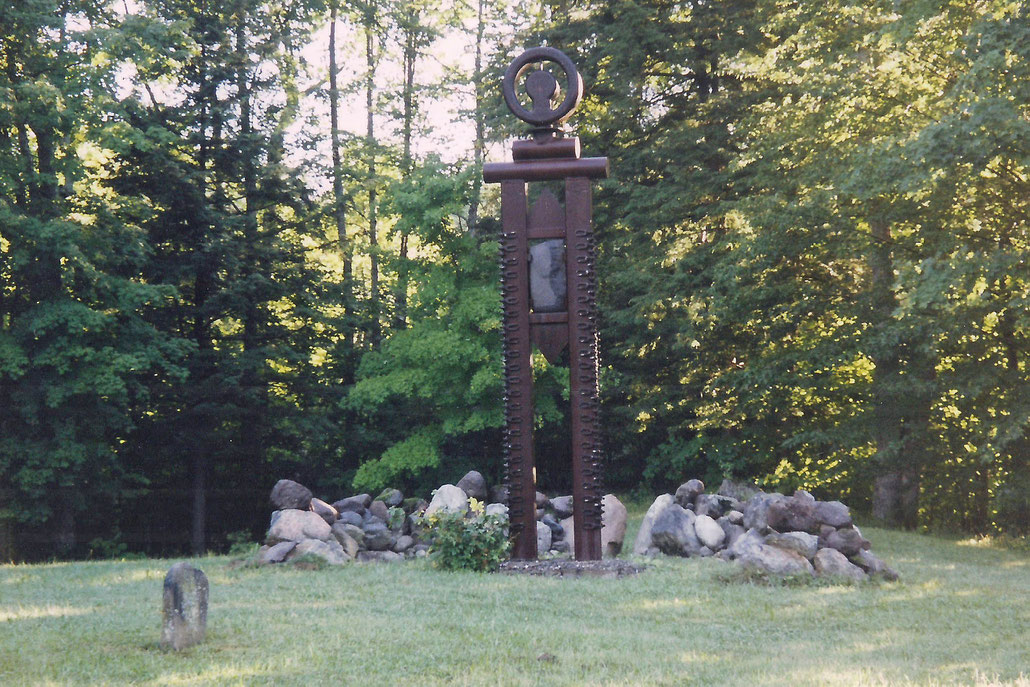
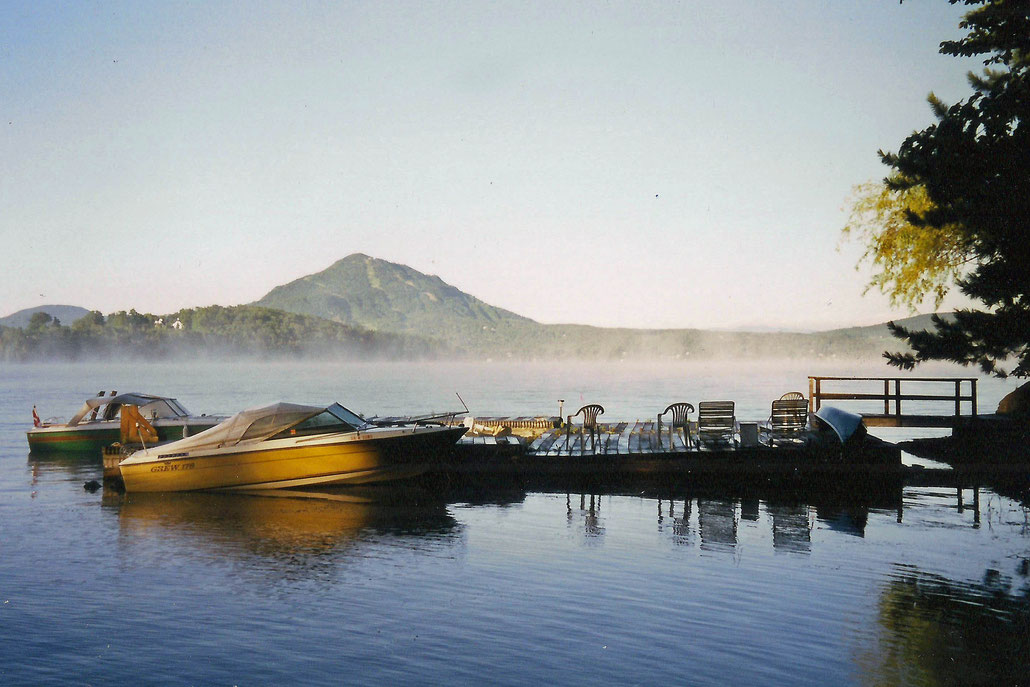
Hex Works
The catalog “Hex Works“ shall give those who are interested in sculpture and especially my collectors a deeper insight into my production because every beautiful thought, every good draft has to be executed to come into existence. The “making” is tied closely to visualizing and to creating. Only those thoughts which are “makeable” have a chance to be transformed, to exist in the real world. Although the hands of an artist can just form those thoughts that have been formed by the brain before, they leave their fingerprints on the sculpture. In my work the ratio, the focused cognitive way of thinking, plays a minor role. I never start a piece by “wanting” something or with a certain goal but out of a vague feeling. It is about letting something evolve, about letting a feeling or a vibration rise and creating out of this emotional state. “ I want to…”, “ I have to …” or “ I should do that … “ are for me not the right attitudes to get started. The mood I need is like the fog over a lake in the morning or the dew in a spider web. “ The first hours a fleeing the night, White linen is rising – the fog, It´s in my mind and in my sight, Something called Memphremagog.” Memphremagog is a beautiful lake in Quebec /Canada where I had a summer workshop from 1993 to 2002 The execution is the raw opposite of those tender feelings and I want to put an emphasis on that in this catalog. Shreds and sparks are flying, fire is blazing. The beats of the hammer are rumbling, the angle grinders roaring, the flexible transmission shafts and straight grinders are screeching. The loudness, heat and air pollution by fine dust, smoke and diverse gases is noxious. While welding not just the heat burns me but the radiation is extremely dangerous, too. Working hurts pretty often and sometimes I bleed. Luckily the crying was reserved for my first years. In summer it feels like working in a sauna, because I always wear full protection gear. Sometimes I am completely soaked in my own sweat, which fills my googles and I hardly can see thru the damp on the shield. I still work in a barn without insulation and without heating. In winter I mostly have -10 ° Celsius sometimes down to -25° Celsius. Then my water cooled TIG-welder breaks down and my beer freezes in the bottle even in front of a 500 watts lamp. The hard and physical demanding labor, this endurance and ability to suffer are part of my duty. I am creating a real thing, a real sculpture. My mind is always tumbling like a leaf in the wind, my creativity whirls like straw on a hot summer day. My visions about form are like shells on a beach, washed ashore and washed away again by the steady waves. My rock in this surf, my anchor, my point of reference is the physical work. It is my, sometimes heavy, duty to execute my sculptures as far as possible. It is the manifestation of my soul as an artist. It speaks to me and my audience.
Hex Works
Dieser Katalog soll den allgemein Kunstinteressierten und den Sammlern meiner Werke einen etwas tieferen Einblick in meine Produktion bieten. Denn jeder schöne Gedanke, jeder gute Entwurf muss letztendlich realisiert werden um zu existieren. Das „Machen“ ist sehr eng mit dem schöpferischen, mit dem schöngeistigen verbunden, denn nur was „machbar“ ist hat überhaupt die Chance zu entstehen. Die Hände des Künstlers formen zwar nur dass was die Gedanken vorher geformt haben, aber sie hinterlassen auf dem Entwurf auch ihre Fingerabdrücke. In meinem Werk spielt die Ratio, also der zielgerichtet Gedanke, eine untergeordnete Rolle. Ich beginne meine Arbeit nie mit einem „Wollen“ oder mit einem konkreten Ziel, sondern mit einem vagen Gefühl. Es geht darum ein Gefühl, eine Stimmung, eine Schwingung zuzulassen und aus dieser heraus zu schaffen. Diese Stimmung ist wie ein sehr zartes Pflänzchen und es verträgt keinerlei „Müssen“, „Sollen“ oder“ Wollen“. Sie ist wie der Morgennebel über einem stillen See oder wie der Tau in einem herbstlichen Spinnennetz. “ The first hours a fleeing the night, White linen is rising – the fog, It´s in my mind and in my sight, Something called Memphremagog.” Im krassen Gegensatz steht nun die Ausführung und diese will ich in diesem Katalog verstärkt zeigen. Es fliegen die Fetzen, Späne, Funken und Glut. Es dröhnen die Hammerschläge, kreischen die Winkelschleifer, pfeifen die flexiblen Wellen und Geradeschleifer. Es ist gesundheitsschädlich laut und dreckig, es stinkt und qualmt, es tut oft weh und manchmal fließt sogar Blut. Das mit den Tränen hat sich zum Glück schon lange erledigt. Im Sommer gleicht meine Arbeit oft einem überlangen Saunagang, denn ich trage immer volle Schutzbekleidung. Manchmal bin ich vollkommen schweißgebadet, in meiner Schutzbrille bilden sich zwei kleine Pfützen und durch die beschlagene Scheibe sehe ich kaum etwas. Noch immer arbeite ich in einer ungeheizten, nicht isolierten Werkstatt. In manchen Wintern bei minus 10° und auch schon bei minus 25°. Dann ist es sogar dem wassergekühlten Schweißgerät zu kalt und das Bier gefriert in der Flasche obwohl es direkt vor einem 500 Watt Scheinwerfer steht. Doch gerade diese schwere Arbeit, die körperliche Herausforderung und eine gewisse physische Leidensbereitschaft gehören bei mir mit zum Werk dazu. Mein Geist fliegt ständig wie ein Blatt im Wind, meine Kreativität, meine Phantasie wirbeln wie Stroh an einem heißen Sommertag. Neue Formvorstellungen spülen wie Muscheln an meinen Strand, von stetigen Wellen gebracht und wieder mitgenommen. Der Fels in dieser Brandung, der Anker, der Bezugspunkt ist die Arbeit. Die Verpflichtung Skulpturen auszuführen erdet mich. Es geht um die Manifestation meines künstlerischen Seelenzustands um diesen mir selbst und dem Publikum zugänglich zu machen. Here we go !
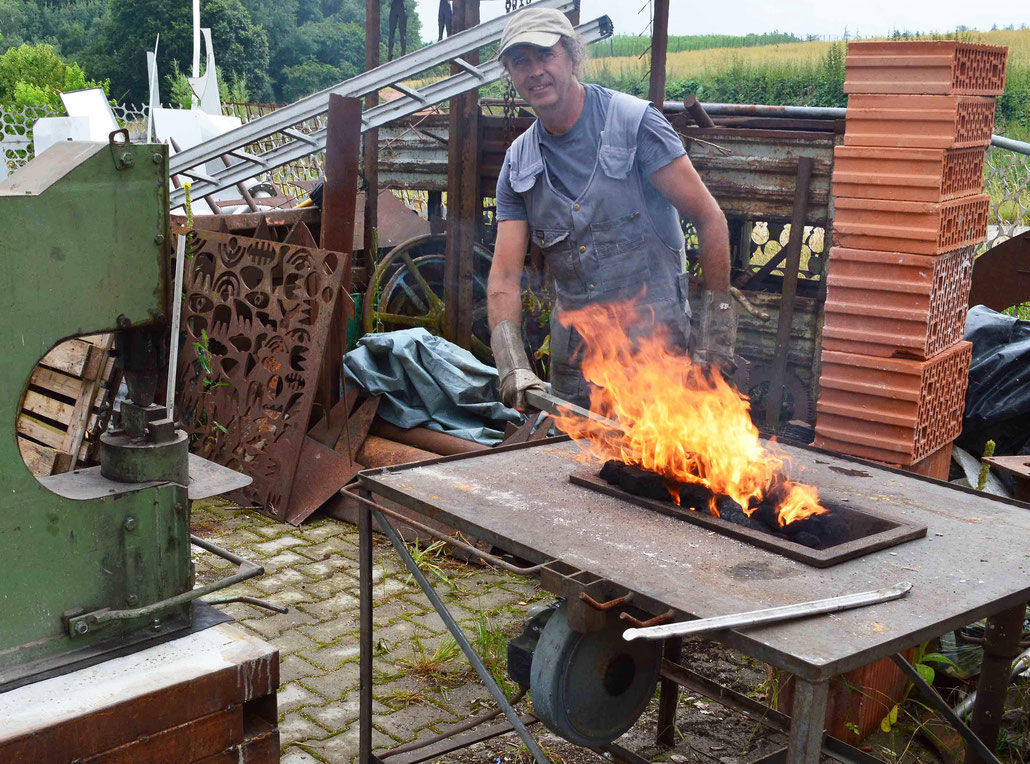
HEX works with his "Meitinger Record" industrial forge hammer from 1961.
CARDANICA by HEX
Cardanica The Eye Of Picasso
Looking back, after a sculpture is done without a draft, sometimes I am astonished to see how great the influence of other artists is. “Cardanica”is a good example. I still can remember that morning in my studio when I easily made it. All my small scrap pieces, several tons at all, are lying on the workshop floor in piles. They get assorted nearly by themselves: When I pick one up and do not like it very much, I throw it far to the back. The ones which “talk to me”, I assort in reaching distance and the ones I love, I put in front around my desk. If someone dumped a truckload of gravel in my yard and I would take every little stone and throw it away while standing at the same place, the smaller ones would be in a more distant range and the heavier ones would be closer. They would be assorted by their physical weight. My scrap pieces are assorted by their metaphysical weight. The more they mean to me, the closer they are. Selection leads dynamically to an order. Art is order. My criteria for selection are intuitiv ones and I try to leave away ratio. The morning I made “Cardanica” I picked up a heavy ring at first, then looked around for some seconds and recognized that it would fit thru the hole within a rectangular scrap piece. As soon as I fitted it thru that hole, the sculpture was nearly finished in my head and just had to be made physically. I needed 30 seconds and 25 years of experience for that draft. Picasso turned the head within the head. He showed it frontal and in profile at the same time and thereby banned time in his paintings. Similar to Umberto Boccioni, who painted his running dachshound with multiple feet or Marcel Duchamp who painted a nude walking down the stairs on all stairs at once. By this they capture time as a fourth dimension in their two dimensional works. Gerhard Richter reaches this effect in his painting “Ema” by doing it like an unsharp photography. Like a photo that is blurred because the exposure was too long. In Picassos works eyes are the most striking signs for this simultaneousness. He Shows eyes, as seen from different points of view, in radial or elliptical form and sometimes even like mathematical angular sectors. He used this technique in hundrets of paintings like in “Seated Woman” from 1938. In my sculpture “Cardanica” two circles are crossing each other. Regarded from different points of view they are appearing as circle, ellipsis or angular sector. The immobile pupil, like a fixed star, keeps the viewer attached to the sculpture as the north star keeps the sailor on the right way.The title refers to the cardanic universal joint which spins around two different axis at the same time. Six nonparallel rods hold the apple of the eye in position and impose a certain suspense. They are not parallel like the strings in Picassos Guitar or Mandolin paintings and thereby create a even more three dimenmsional feeling in an already three dimensional sculpture. I underline a vanishing point which is normally just needed in two dimensional artworks. I have seen such lines in many Picassos, especially in “ Still life with Mandoline” from 1924 and the 1928 drafts for the memmorial for Apollinaire. After finishing “Cardanica” it became clear to me how much of Picassos way of thinking I have soaked up over the years. As soon as I had the fitting steel pieces at hand, the sculpture was built automatically.
Cardanica oder Picassos Auge
Rückwirkend, nachdem eine Skulptur, welche ich ungeplant geschaffen habe, fertig ist, bin ich oft selbsterstaunt wie offensichtlich der Einfluß anderer Künstler auf mich anscheinend ist. Ein gutes Beispiel dafür ist „Cardanica“. Ich kann mich noch gut an den Morgen im Atelier erinnern, an dem ich sie einfach aus dem Ärmel geschüttelt habe. Mein ganzes Kleinmaterial, sicher einige Tonnen, liegt in wüsten Haufen auf dem Boden. Es sortiert sich, sedimentär, selbst: Habe ich ein Teil in der Hand und es gefällt mir kaum ( gar nicht gibt es nicht, sonst hätte ich es nicht gekauft ), so werfe ich es ganz weit nach hinten, die mittel guten landen in der Mitte und die tollen lege ich, wenn mir nicht sofort etwas dazu einfällt, ganz nach vorn.
Würde man mir eine LKW-Ladung Kies in den Hof schütten und ich würde jeden einzelnen Kieselstein von mir werfen, so lägen die leichteren weiter außen und die schwereren näher bei mir. Eine rein physikalische Sortierung. Ebenso liegen die Stahlteile, die für mich mehr Gewicht haben, durch ihre metaphysische Bedeutung sortiert, näher bei mir. Selektionsprozesse führen dynamisch zu einer Ordnung und Kunst ist Ordnung.
Meine Selektionskriterien sind intuitiver Natur,ich versuche die Ratio auszuschalten. An diesem Morgen also hob ich als erstes den schweren Ring auf, blickte einige Sekunden über den Haufen und sah sofort, denn ich mache seit 25 Jahren nichts anderes, daß er durch das Loch in dem rechteckigen Blech passen mußte, welches weiter hinten auf dem Haufen lag. Sobald ich den Ring zum ersten Mal durch das Loch gesteckt hatte, war die Skulptur in meinem Kopf fertig und mußte nur noch physikalisch ausgeführt werden. Der Entwurf hat 30 Sekunden gedauert und ich habe 25 Jahre Erfahrung dafür gebraucht. Picasso drehte den Kopf im Kopf, zeigte ihn gleichzeitig frontal und im Profil und bannte somit einen Zeitverlauf im Bild, so wie Umberto Boccioni es mit den Beinen seines Dackels tat. Auch Marcel Duchamp läßt seine Nackte eine ganzeTreppe auf einmal hinab steigen. Damit bannt er eine neue, eine vierte Dimension ins Bild, die Zeit. Gerhard Richter bezieht sich in seinem Gemälde „Ema“ auf dieses Werk von Duchamp und erreicht den Effekt der verrinnenden Zeit durch eine pseudophotographische Unschärfe, so wie sie bei Bewegung und gleichzeitig zu langer Belichtung auftritt. Die Augen in den tatsächlich zweidimensionalen Bildern Picassos sind das augenscheinlichste Merkmal dieser Gleichzeitigkeit. Seltener sieht man es an den Nasen. Picasso stellt das Auge, von verschiedenen Standpunkten betrachtet, als Kreis, als Ellipse oder sogar, ganz seitlich gesehen, als Winkelsektor dar. Dies sieht man in hunderten seiner Bilder und Zeichnungen, besonders schön zum Beispiel beider „Sitzenden Frau“ von 1938. Bei „Cardanica“durchdringen sich zwei Kreisformen und bilden, wechselnd mit dem Standpunkt des Betrachters, Kreis und Ellipse. Die unbewegliche Pupille, dieser Fixstern in der Skulptur, hält den Betrachter auf Kurs, so wie der Polarstern den Seefahrer. Picassos Methode der gleichzeitigen Darstellung verschiedener Blickwinkel findet sich in„Cardanica“ wieder. Der Titel bezieht sich auf das kardanische Gelenk, welches sich gleichzeitig um 2 verschiedene Achsen drehen kann. Sechs nichtparallele Stangen halten den Ring/Augapfel in Position und erzeugen eine gewisse Spannung. Dadurch, daß sie nicht wie Picassos Gitarren- und Mandolinensaiten, welche ebenfalls Spannung symbolisieren, parallel sind, sondern auf einen Fluchtpunkt zulaufen erzeugen sie eine noch dreidimensionalere Erscheinung der Skulptur. Solch einen Linienverlauf habe ich schon im „Stilleben mit Mandoline“ von 1924 und den Entwürfen für das Denkmal für Apollinaire von 1928 gesehen. Erst im Nachhinein wurde mir bei „Cardanica“ klar wieviel ich von Picasso über die Jahre hinweg aufgesogen hatte, so daß ich, sobald ich die richtigen Teile in der Hand hatte, ohne nachzudenken diese Skulptur machen konnte. Ich fahre seit 20 Jahren im Juni an die Côte d´Azur um die Luft zu atmen die Picasso schon eingeatmet hat und sie im Atelier wieder auszuatmen. Ähnlich Beispielhaft ist die Skulptur „Andromeda“ für den Einfluß von Henry Moore, Barbara Hepworth und David Smith auf mich.
Da Schaffla und da Kini. Alois Petz, head of the Osselthauser Schaffler and Hex Shooting Club King.
Hex doing the traditional Schaffler dance in Osseltshausen
Hex holding a speech at a farm with a red chick under his arm. His wife´s nickname is "Red Chick" because of this.
Markus Höflinger the "Reifenschwinger", Hex " the Kasperl" and his red chick
Setting up a 36 m May-Pole by hand is a bavarian tradition. The danger and the teamwork strengthens the unity of the people.
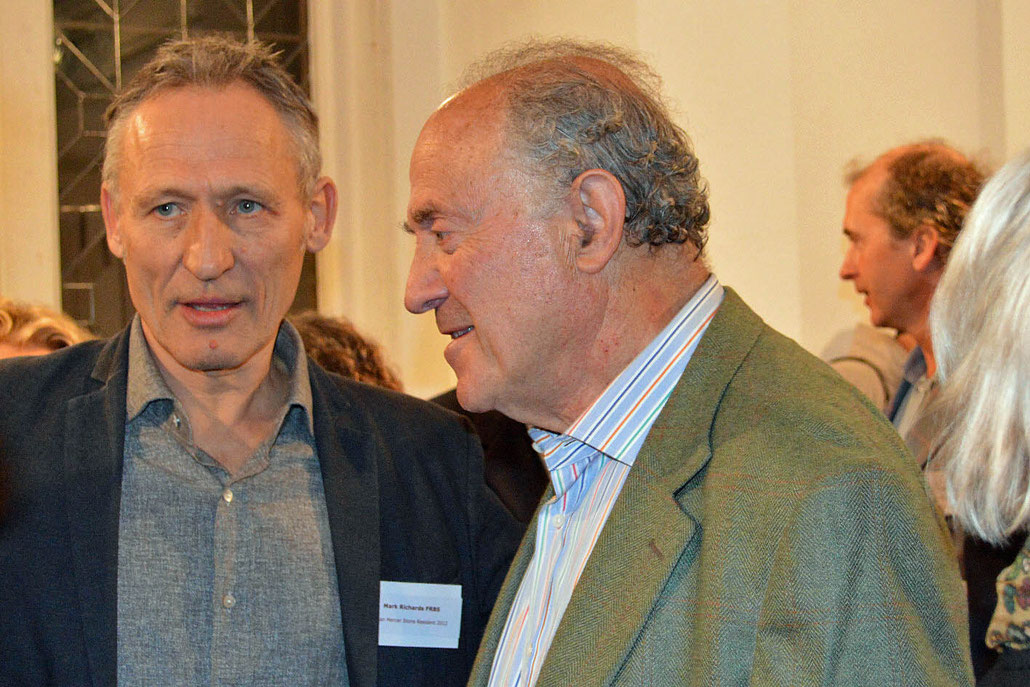
Mark Richards, Yorick Blumenfeld and Hex at his show at the Royal British Society Of Sculptors in London.
This Version of De Chirico´s "AUTORITRATTO" from 1921 shows the bloody young HEX painted by Volker Hartmann. " And what could I love if not the hexaphysical way of things"
Creatio Ex Nihilo - Created out of nothing
About the self assurance while searching for nothingness. Man asks himself who he may be. To answer this question, man has to leave himself away. He has to regard the world that surrounds him and that is partly formed by him, as a mirror in which he can see reflexions of himself. The surrounding world consists of three parts: the civilised, mechanical, technological part the biological part the spiritual, metaphysical part
Art worked and works with sujets of all three fields, but the metaphysical part is the one that is of the most interest. Immedeately the question rises if the blue horses of Franz Marc are still in the biological world or if the cars, pressed to cubes, by John Chamberlain are still technological. When does the shifting of a piece of art from the biological or technological world into the metaphysical take place? Is this connection to the metaphysics an essential requirement to call a painting or a sculpture a “piece of art”? Art always raises questions about the world behind the surface of a picture or a sculpture. The “ homo pictor” tries again and again to make the unseen seen or better, to present a feeling for the world we can not see.The modern human being stampes things he can not see, touch, smell or measure easily with the label “nothing”. So we talk about the nothingness in art. About nothingness in all varieties and shades. About the happy and colorful nothingness of Wassily Kandinsky, about the avantgarde nothingness within a black square of Malewitsch, followed by the sober nothingness of a Mondrian. Piet Mondrian tried over decades plenty styles, from landscapes to figurative and cubist paintings until he reached nothing. That nothingness that we know as “his” style. The peak of genius nothingness is marked by Frank Stellas “Black Paintings”. I have to admit that all my theories about nothingness are disproofed by Pablo Picasso. Kandinsky dissolved our conception of space, of landscape and real things in a rain of paint. This wizard touched our world with his magic wand and with a “pling” we were surrounded by pulsing colors. This act lead to the creation of some realgreat abstract paintings. They were sponteaneously free, open, clear and unconscious and thus possessed nearly everything people expected from modernart in those days. Replacing landscape and figure by color, Kandinsky was in danger to just substitute one matter by another. He was in danger to suffocate the newly conquered atmospheric freedom of abstraction by its single ingredient: pure color. Malewitsch treated landscape and figures with a flat-iron and left it on the canvas until everything was burnt to a black square. He substituted the complex coordinates of the human figure in space by flat geometrical combinations. The white square on white background whipes out the figure and still represents it thru its negation. A shadow gives you information about the light that produces it and a hole defines the material that surrounds it. Mondrian tried to compose paintings just out of lines and planes. He used the borders of volume like a cardboard box that is unfolded and layed down flat on the canvas. He searched for a reality without substance, without flesh and bone. He searched for a visual world that was so charged with energy that he could leave away the physical matter. A world where no figure, nor its abstraction is needed. Abstraction is tied to the thing it abstracts as entity is tied to nothingness. I don´t have to recite Hamlet here. Mondrians and Malewitschs attempts were cool and hard edged, still those squares and lines represent nothing but the human figure. Even Kandinskys wildest compositions, those colorful thunderstorms, evoke the impression of natural phenomena. This is why Picasso bailed out of the already accelerating cubist train. He had too much hot spanish blood running thru his veins, too much ingenius selfconsciousness and too much brutish instinct to waste his time searching for something. This makes him uncompareable with other artists. Pablo Picasso already arrived before he left home. Picassos simple answer on the question “Who am I?” was “Picasso”. Doubtfulness was surely not one of Picassos problems. Everything concerning the european art of the first quarter of the 20th century seemed to indicate the triumph of abstraction over realism. Eighty years later, after brutal suppression by fascist and socialist realism and nowadays beeing attacked by chinese neorealism, Neo Rauch and the “Leipziger Schule”, abstraction seems to succeed. But the battle is not yet won. Picasso is the great winner between these frontlines. The great innovative goals of abstraction, enriched density of matter and pureness of space, could just be reached on costs of the figure. So we might have lost more than we won because we just have us and we are “figures”, made as God´s image. The importance of the human figure in art lies in its versatility within space and nothing proofs this more than Picassos paintings. He integrated space into the figure and the figure into space and he filled this space with eros.
Creatura potest creare
If god, the creator, is an artist who made man after his very image, then also this creature is able to create in a certain way. This conclusion was drawn byThomas of Aquin in the 12th century and thus weakening the dictum of Augustinus who said: “creatura non potest creare”, the creature can not create. I agree with both of them: On one hand I am sure that man as an artist is able to create works which support mankind in broadening its social and humanistic abilities. On the other hand will man as a scientist never discover something that has not been there before. Man will never create something that is better than that which has been created by god before.The scientist is the one who cares about the physical survival and existence of mankind. He researches food, medicine, heating, water supply and also developes weapons of mass destruction.The artistis is the one who leaves the center of human existence and goes out to the borders. He creates physical and non-physical works which shall provide insight and contact to the world that is behind our known own world. Intellectuals in the Renaissance sometimes even went so far to proclaim artists as gods.Leonardo da Vinci describes the artist as someone who creates plentiful species out of his own freedom and will. Picco della Mirandola encourages all people to use theire likeness to god and create something new. Many cultures know the deus artifex, the artistically creating god who formed the first human beeing with his own hands. The Mayas say he did it out of corn, the Asmat believe it was wood, the Greek learned through Hesiod that it was clay. No matter what material, the ancient gods were sculptors.
Gabor Domokos, assistant professor at the University of Budapest, recently found out that he could defeat a mathematical theorem with the help of a turtle. The theorem of Vladimir Arnold states that there is no three dimensional object which has less than 4 equilibrical points. That means points on which the object would rest on a plain surface.The Indian starturtle just has 3 equilibrical points. If it would lie on its backside,which practically never happens, it would need an energy close to zero to turn around. Domokos empirically proofed that this form solely exists in the living nature. It never appears in the inanimate nature. He developed a corpus called “GÖMBÖC” which is the first inanimate form with just 3 equilibrical points. Thus he created as a scientist, as a human beeing, as a creatura something that never existed in the inanimate world before. He copied gods living nature but did more than just uncover.Domokos widened the borders of our known world. His creation reminds me of the works of the swiss sculptor Max Bill and I regard the “GÖMBÖC” as a real piece of art, although his creator is not an artist. “Art in its final consequence is the pure expression of harmonical measure and law. It brings systemy to an orderly form and brings this order by artistical means to life. It is real and spiritual,unnaturalistic and yet close to nature. It seeks the universal and still cares about the matchless.” Max Bill
The mathematical discovery of the Moebius Belt, in which the upper and lowersurface are connected endlessly in itself, engaged Max Bill for many years. In my sculpture “Raum-Zeit Kontinuum” ( Continuum In Space And Time ) from 2005 I also work on a theorem. This continuum describes in the theory of relativity the combination of time and space in a fourdimensional structure. By transforming the coordinates of space and time in another system of reference, they can be connected. Also mass and energy is needed and a spectator who moves at least with the speed of light. As anartist I imagined this in the following way: the formerly plane, defined by two vectors, is bent in the view of the spectator speeding along and extended to the third dimension. The moment of inertia leads to doubeling of the plane and forms a time gap ( represented by the hole in between the two spiral planes ).Scientist will shake their heads now, but it was fun for me as a sculptor. “If a shadow is the two dimensional projection of the three dimensional world, then the three dimensional world as we know it is the projection of the four dimensional universe. “ MarcelDuchamp
HEX F.R.B.S.
Perlestrasse 16
84072 Au / Hallertau, Germany
mr.hex@weihenstephan.org
www.rbs.org.uk
www.sculpture-network.org

